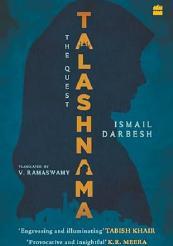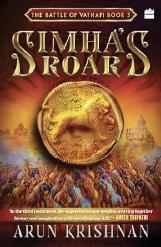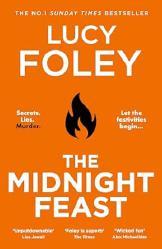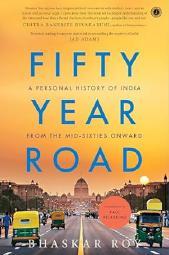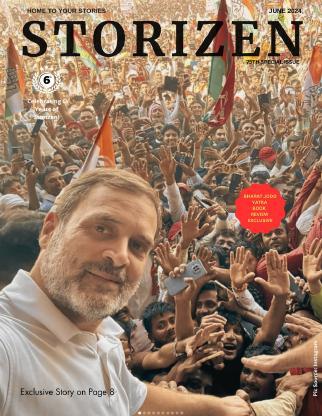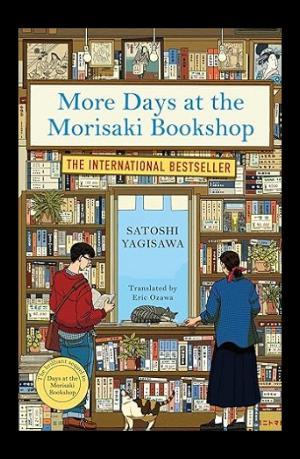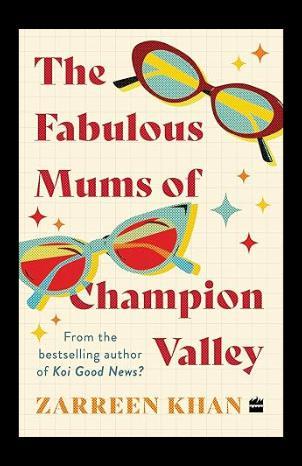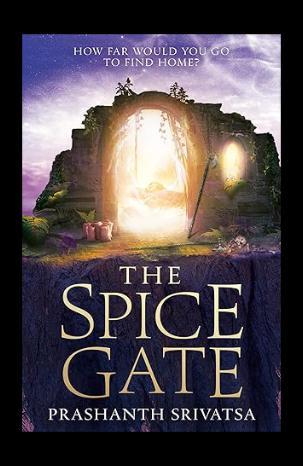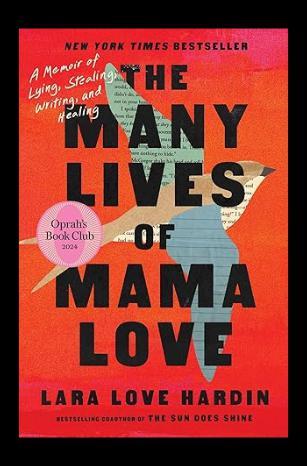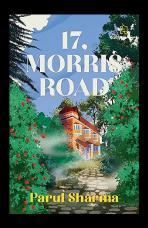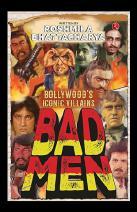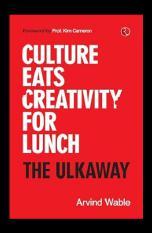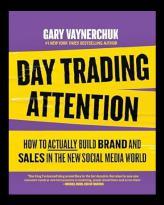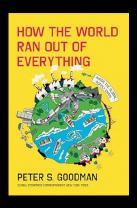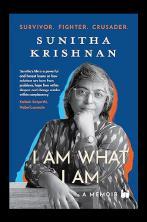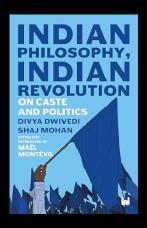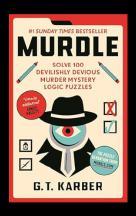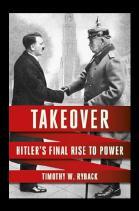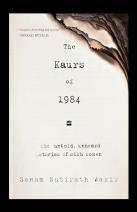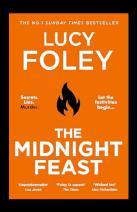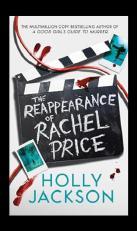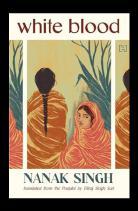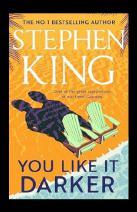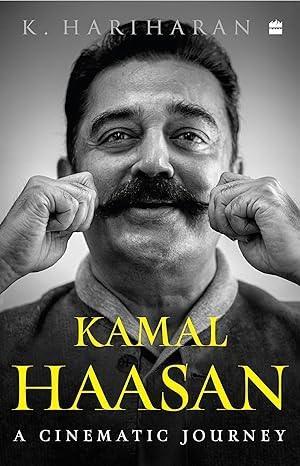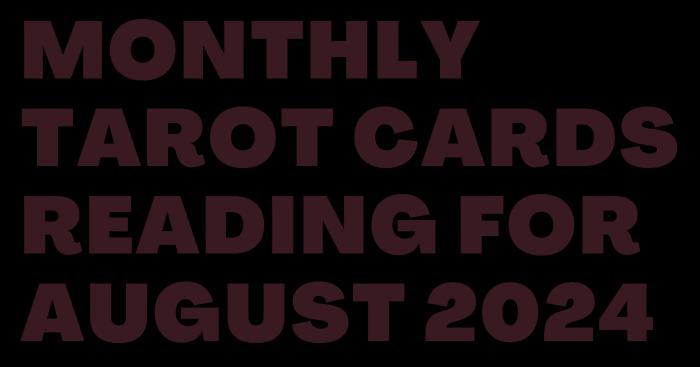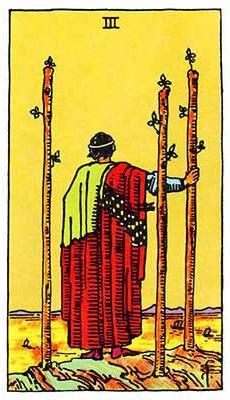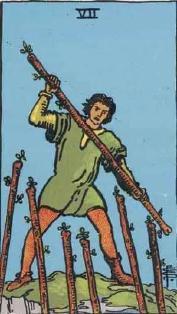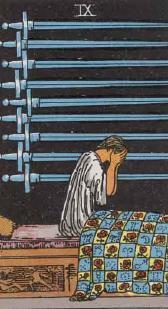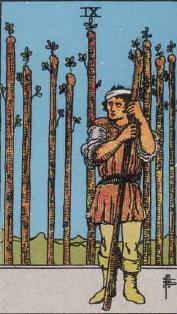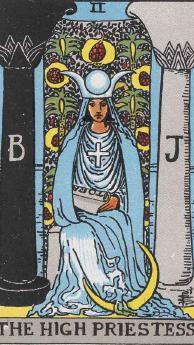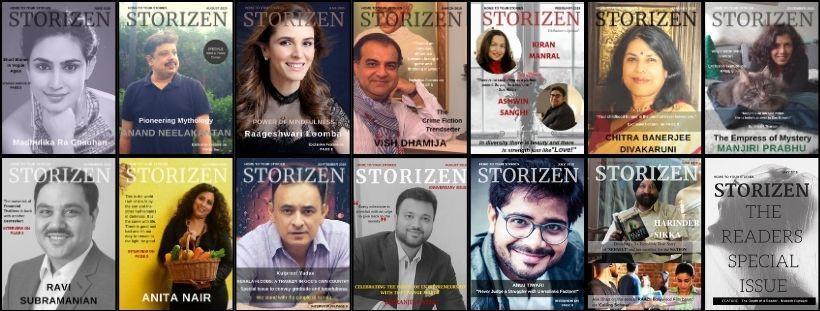A Wait for the Rain
by Sreelekha Chatterjee
uraj stares at the stiff, papery chappatis, devoid of nourishment for want of water like the parched earth that yearns for rain. He’s unable to eat. A constant worry of what will happen to his paddy plantation is consuming his peace of mind. He treats his plants like his babies, with fatherly affection overflowing, as he nurtures them at every stage of their development During the growing season of rice, the rains have been halted by the treacherous clouds that show up everyday in the sky but with false promises Failure of crops due to insufficient rain is what every farmer dreads How will they get over a spate of drought?
“Have some more dal?” His wife, Malati, says, breaking into his thoughts
“Temperatures are soaring with no respite Do you think priests chanting the name of the water god Varuna while immersing themselves in the pond will appease him? Or, two dancing men shouldering a pole horizontally with a frog tied in the middle will bring rain and peace to our land?
Or, a marriage of two frogs will invite the rain?
There is no cure for such bizarre superstitions
It’s time we realize that global warming is affecting our climate ” Their twenty-five-year-old son, Chetan, walks in loaded with condescension and intolerance toward the age-old rituals. “I’ve decided to leave this village and join our folks who have migrated to the city.” He continues.
“You don’t have anything worthwhile over there,” Suraj says to no one in particular.
“End of discussion. We’ve gone over this again and again. You know very well that we’re going to face a drought condition here ” Chetan retorts with an impatient eye-roll
Suraj falls silent as Chetan storms out of the room In the next room, Suraj hears him packing his suitcase
Suraj keeps an outward calm while steaming and sighing inside Perhaps his son is right and he is wrong Holding on to the things that are precious to him seems to be valueless in the eyes of the new generation He’ll surely miss his son But trampling his son’s dreams to lead a comfortable life is something he never wishes to do But then life is all about struggles overcoming them one by one in due course and emerging victorious
only to face the next one. Will his son’s days in the city promise to be free of obstacles? The contentment that one finds in his homeland is seldom achieved elsewhere.
Suraj somehow gulps down the food and proceeds toward the field It has been a routine of visiting the plantation every now and then that he follows on a daily basis The rice plants stand quietly lifeless, fatigued from the wait for the monsoon The rains will bring back the life and vigor slowly draining away from them, aid in the renewal of energy, and accomplish rebirth and survival Will the rain god Indra not conquer the evil demon Vritra once again and bestow the earth with its much-needed rain?
He notices his neighbor Ramu in the adjacent field
“God knows when it’ll rain,” Suraj says with a plangent pathos in his voice
“We’re moving to the city day after tomorrow,” Ramu announces “It’s almost a month that we’ve waited, but there is no sign of rain If the plants die, then we’ll have nothing to eat, forget about the loans that we’ll be unable to repay ” He resumes
Suraj remains quiet for a moment and says, “Do drop in a message when you reach there safely ”
At home, Suraj gawps at his courtyard half-full of wilted, brown plants He has been watering them regularly; covering them with an old bed sheet as a makeshift shade, but the scorching heat has done the damage. What else could he do to prevent them from progressing through untimely senescence? He feels like crying but tears will not come out. Perhaps there is a shortage of water in his eyes as well. Abruptly, goose pimples run up his spine as a few water droplets fall on his hand. His arid heart senses the cool wind, dropping the hint of a refreshing shower. Swept by horripilation, he rushes inside the house to inform Malati about it.
Malati is busy doing embroidery work on a piece of cloth with which she intends to cover her TV Soon, the smell of petrichor floats in the air, followed by the rain clattering on the roof as if a giant is breathing heavily
“Get the brinjal and potato fritters ready, Malati I’ll be back in a jiffy ” He demands, eyes shining brightly
“Where are you going out in the rain?”
“To check whether my babies are doing fine ”
He pops out in the rain with his umbrella up It’s coming down fiercely onto the umbrella, something he hasn’t experienced in a while The village roads are already having puddles here
and there With a cautious eye, he treads the rain-worn, muddy path where the rainwater is streaming down like a newly formed river He meets fully drenched Ramu on his way to the field
“You won’t be going to the city Isn’t it?” He asks with a childlike jubilance
Ramu smiles shyly as if embarrassed about his previous decision to leave his village before disappearing
From a distance, he sees his paddy field come alive back in glory dancing to the tune of the rain The scent of the jade vegetation is the best perfume in the world As the sky opens up further and showers continue, with lashes of lightning, tempestuous trees awaken, prancing and joining in the medley of rain’s laughter It seems as if an artist has freshly painted nature with vibrant browns, greens, and blues, adding a sprightly luster to all.
Suraj watches the downpour in complete awe for sometime. The rain has made the atmosphere cold. He espies a pretty teenage girl beneath one of the mango trees adjoining the field. Someone known to him; a girl one will instantly be fond of. At a second glance, he recognizes her to be his own daughter. What is she doing over here? Unexpectedly, he notices another boy along with her Alerted by his presence, they hide behind the tree A frog is croaking somewhere nearby On earlier occasions, he would have instantly taken suitable action, but now his heart is full of good cheer and a soft, indulgent grin appears on his face
On his way back, he notices small children playing in the rain and releasing paper boats on the waterlogged roads in front of their houses The pond near his house swells with pride on being replenished by the rain Beneath it, he senses the aquatic species beaming with joy
Outside his house, he shivers at the thought that his son must have taken the afternoon train to the city A sense of bitterness overwhelms his newly found happiness Perhaps an empty nest is what is destined for his fate A smell of gram flour wafts in the air which draws him into the house His wife is preparing the fritters He reaches the kitchen located at one corner of the house He pauses with his hand on the door Chetan is blowing air onto a piping-hot brinjal fritter that he is holding in his hand while savoring it bit by bit
“Fetch a plate and sit down,” Malati says with affection that Suraj hasn’t seen in the past few months A scarcity of rainfall can affect motherly affection as well
“Yes, Ma!” Chetan says, shifting the brinjal fritter from one hand to the other.
Suraj steps in The mother-child episode suddenly stalls at seeing him, while the half-eaten fritter slips from Chetan’s hands and drops on the floor A big black ant scampers toward it
“You still here? Don’t you have a train to catch?” Suraj enquires wondering what time it is and whether Chetan has already missed the train
“I’ve given it a thought, Papa It’s best to have fritters right now and that too prepared by the greatest cook in the world my mother ” Chetan declares with the innocent eyes of a five-year-old.
Suraj smiles and hugs his son. Outside the rainfall ceases, and in the distant, grey horizon a vibrant rainbow emerges. This time his eyes don’t disappoint, as a surge of tears rolls down uncontrollably. Isn’t disorder and joy of life as ephemeral as a rainbow?
Sreelekha Chatterjee’s short stories have been published in various national, and international magazines and journals like Indian Periodical, Femina, Indian Short Fiction, eFiction India, The Criterion, The Literary Voyage, World of Words, Writer’s Ezine, and Estuary, and have been included in numerous print and online anthologies such as Chicken Soup for the Indian Soul series (Westland Ltd, India), Wisdom of Our Mothers (Familia Books, USA), and several others She lives in New Delhi, India
You can connect with her on Facebook at facebook com/sreelekha chatterjee 1/,
Twitter -@sreelekha001, and Instagram @sreelekha2023
The gentle breeze carried raindrops drumming on the window panels. Anil, wiping with his apron the chickpea flour clinging to his hand, calls out with warmth. "Everyone, bread pakoras (fritters) are hot out of the fryer."
But besides the rain's pitter-patter sound, the house was pin-drop silent "Strange," he mumbled as he proceeded to the living hall with the pakora platter
His wife, Sheetal, was pacing around the palacesized hall, flaunting their opulent lifestyle Sheetal, a woman who had once been deeply in love with Anil, now felt neglected and unimportant in his life
"Oh, hell, this rain," she cribbed, "has spoiled my kitty party " Anil heard her complaining to someone on the phone
He then looked around for his fourteen-year-old son, Rohan He, too, looked in a sulking mood The ongoing rains had canceled his cricket match
"Guys! Chill," he says "Let's enjoy these rains with these bread Pakoras "
Sheetal and Rohan looked at Anil with bewildered expressions
"Mom, isn't Dad acting weird for the last few weeks," mutters Rohan, confused and irritated
"First, he tried to surprise us with the picnic plan. Next, he insisted on having at least dinner together, and … now these bread pakoras…What is the matter with him?" Scoffed Rohan with annoyance.
"He doesn't even know that I hate chickpea flour," he snapped out the last lines loud enough to be heard. "Ohh," said Anil in a flustered voice. "I didn't know that son. "
"Ugh! How will you, Dad?" He said, rolling his eyes "For that, you need to be present here with us " Rohan then rushed into his room upstairs
Bang! The sound of the door shutting lashed cruelly on Anil's heart
"You're right, Son," he admitted, his voice thick with regret "I haven't exactly been present these past years ?" His gaze flickered between, taking in the years etched on Sheetal's face and the way Rohan held himself aloof, a shield against his disappointment
"My work became an all-consuming monster, and I… I missed out on everything... your first step to growing years." He sighed heavily with repentance.
Anil Varma was a renowned name in the business circuit a self-made man whose stories of rags to riches featured in almost every business magazine. But while facing significant challenges for success, Anil brushed off the minor difficulties of day-to-day life as redundant
His wife, Sheetal, often tried talking to him about her aloofness towards his responsibilities as a father and husband But Anil thought of these challenges as trivial
So, Sheetal began to distance herself from him emotionally at some point and started to build a life for herself and their son without the companionship of her soulmate
Sitting in his study room, Anil was engrossed in deep thoughts "My presence is redundant for my family as they have created a life without me," he mumbled sadly
"Sheetal often tried talking to me about her loneliness and my aloofness But I paid no heed as I thought my successful quest for material comfort could foresee all these life challenges Ohh, how wrong I was," he shook his head in remorse
A gentle knock on the door broke his chain of thoughts He saw his wife coming inside She held a pink lilies bouquet Her eyes were blazing with unseen sadness
"Why, Anil, after so many years, you're trying to be a man I fell in love with? "She says in a voice laced with discomfort as she shoves the pink lilies bouquet on his table.
"That man is buried deep in my memories, and I have learned to live without him. Don't try to bring him back."
Anil's heart clenched in his chest. "Sheetal," his voice rasped, "I I was a fool So, caught up in chasing dreams that I forgot the one I already had " He met her gaze, the sadness in his eyes mirroring hers
A single tear escaped Sheetal's eye "Apology accepted," she said softly "But apologies don't mend what's broken, Anil, isn't "
The question hung in the air heavy as a daunting challenge, and a plea rolled into one as she hurriedly left the room
The coldness of the rain spluttering outside settled over on Anil, too
He mutters with remorse "This matter isn't about board rooms but about hearts "
Taking a long breath, he kept thinking for a long time " It's a making of my own doing," he said as the reels of the past started rolling in his mind, taking him back a few months
The sudden demise of his Mother had left him drowning in grief As the initial shock subsided, a different pain gnawed at him It was a guilt for the time he hadn't spent with her
One such day, as Anil rushed out the door for the office, the scenes unfolded that left him numb It mirrored his failings as a father and a husband
He saw his son Rohan brushing off his grandfather's request to spend time together
"Rohan," Anil called out, "Why can't you spare a few minutes for your granddad?" The hardness in his voice surprised everyone around him.
Rohan, like any self-absorption youth, shrugged. "I can't? I have a critical match today. Tell him to spend time with that expensive phone you gifted him.
Remember you gave him for the same purpose?" He unknowingly justifies his actions by saying he has begun to follow what he has seen his father doing
"Y Yes," admitted Anil in a flustered voice, not knowing how to respond He then tries to justify "But Rohan, a few minutes won't make a difference "
Rohan looked at him and innocently asked," But Dad, what wrong I'm doing " Then he went away
Rohan's words hit Anil like a physical blow They reflected the neglect he always justified by filling his absence with materialistic pursuits
That day, Anil stayed back at home He was sitting in his porch garden when Sheetal, his wife, breezed past him, her voice laced with surprise "You're not going to work?"
Ignoring her question, he asked, "Going somewhere, Sheetal?"
"A party," she causally replies
"Can we talk for a while?" The words tumbled out as a plea he hadn't offered in a long time.
She hesitated, a flicker of something unreadable crossing her eyes before it vanished as quickly as it appeared "Sorry, Anil," she said, reaching for her purse with practiced ease "I'm running late We'll talk some other time "
Her dismissal was a cold slap, the echo of a thousand similar moments where he had brushed aside her needs in favor of work
Distantly, he could hear an old Kishore Kumar song, Zindagi ke safar mein guzar jate hain jo makam, Woh phir nahin aate, Woh phir nahin aate! (Those moments that pass us by on life's journey they never return ) A choked whisper escapes his lips, "I know I can't rewind time " he sighed sadly
Then, a flicker of determination ignited in his eyes "But I can try to rewrite the future " He made a promise to himself.
From that day on, he has persistently tried to carve out a place in his family's life. Every small gesture, every moment he spent with them, held the promise of rebuilding what he had almost lost.
xxxx
One evening, as they sat around the dinner table, Rohan remarked, "These bread Pakoras aren't bad, Dad "
"Since you didn't like chickpeas, I tried it with moong dal flour "
Rohan looked up from his plate, a flicker of surprise crossing his face "You did?"
Anil smiled and nodded.
There was a comfortable silence for a moment. The only sound was the clinking of rain on the windows as if trying to slowly wash away the bitterness of past times.
It had been a long time since their dinners felt this normal A warm feeling spread through Anil's chest "Maybe, just maybe, this is the start of a green shoot pushing through the barren ground of our relationship " He whispers with hope
"It's good," Rohan smiled, taking another bite "Different, but good Here, try one, Mom " He popped a Pakora into his Mother's mouth
Sheetal smiled as she chewed the Pakoras It wasn't just the taste of the Pakora that brought her pleasure but the comforting sensation of sitting together as a family
They continued eating, and the conversation flowed easier than usual It wasn't perfect, but it was a start Later that night, as Anil lay in bed, he couldn't help but wonder what the future held
Could they rebuild what they had lost Only time will tell One thing, however, was sure: this journey wouldn't be easy It would require a lot of work, a lot of forgiveness, and a lot of commitment from all of them
For the first time in a long time, Anil slept peacefully to get ready the next day for the battle of the lost times
Ankur R Gupta - Ankur R Gupta is a multifaceted individual with a passion for storytelling and a deep understanding of human psychology
As an author, writer, and cybercrime intervention officer, her articles and stories delve into the complexities of human emotions, relationships, and the pursuit of personal well-being
Through her captivating narratives, she invites readers to embark on a journey of introspection and self-discovery
In addition to her writing pursuits, Ankur is an avid traveler She is particularly drawn to historical and adventurous destinations, where she immerses herself in diverse cultures, traditions, and histories These experiences serve as a wellspring of inspiration for her work, adding depth and authenticity to her stories and articles.
@ankurrastogigupta
https://inkmyword medium com
AN ADVENTURE TO CHERISH
by Neelakshi Banerjee
t was an adventure that turned out to be exhilarating but later transgressed to downright scary as we ventured to Port Blair to explore the sleepy waters of Radhanagar Beach during the later part of February cold. The weather was perfect, the guide said it was the pertinent time for sea lovers and surfers to delve into the tapestry of holiday options that the magical islands unfold
Port Blair seemed self-sufficient, with its glittering promenade dotted with curated palm trees, a delight for the morning walkers or evening strollers who take silent respite in revitalizing themselves with the pristine tranquility of the twilight washed sky and aesthetic surge of the sea
KalapaniJail, a metaphor for the prison’s isolation built by the British, embodies the brutal and ruthless struggle Indian freedom fighters had to endure to see a glimpse of freedom and finally to lead our country in its full illumination That Jail is sculpted in the center of Port Blair, now housing a small light and sound show in the wee hours of the crimson dusk to highlight the plight and ordeal of our soldiers in that squalid, reclusive prison braving the harsh treatment with unbowing dignity The solemn sound effects playing rhythm with the light and shade of the setting sun painted the entire experience with a somber aura as all the spectators watched with rapt attention and ragged breath as stories of torture and courage unfolded before them, set in the form of songs and narrations.
The next day we took a jetty to the Havelock Island where the sun always smiles at the glittering sands and jaunty waves. Bicycling our way to the winding roads, we discovered that it was almost a virgin island draped in verdure foliage, almost guarded and insulated from the clamor of the outside world housing a scanty population of just over five thousand
Our guide, chalked out our itinerary which included scuba diving, snorkelling and a sundry other seasports even visualizing which set my heart at a frantic pace
Our cottage in the SeaShell resort seemed like an added appendage to the extending Nature, blooming and mushrooming from its seeds, sprouting into an enchanting haven with strawhay cottages, cobbled streets wending towards the moonwashed waters silently rippling at its precinct and gentle coconut trees guarding the
haven, almost territorial.
The next day we were due for scuba diving, my husband had a picture of suppressed shiver, at the thought of holding his breath underwater. We were led to an austere building with square rooms and devoid of roof to purchase tickets Some lonely hammocks were softly swaying between the coconut trees, where some foreigners were leisurely bumming smoke and listening to old pop music and I instantly connected to the mood, being besieged by it so many times The familiar scent disappeared as we were led into a small motorboat in the deep waters for the show to begin In the boat were other travelers, mostly newlyweds flaunting their stone studded bangles and richly painted nails adorned with equally shiny rings The bottom of the boat was glasslined to offer a view of the effervescent marine ecosystem rich in variety and resplendent in colours, as Blue Marlin, Dogtooth Tuna swam beneath us unperturbed
As we reached the destination spot, from where the scuba will begin, I observed some people growing jittery, especially an elderly couple, who probably bought the tickets on an impetuous whim The guide gave us the suits and oxygen masks and started teaching us nonverbal communication techniques underwater in case the need arose After a couple of minutes practicing of inhaling and exhaling with our mouths stuffed in the masks, the guides told us we were ready to venture into the oceanic depths just when a wave of uncertainty swept past us
Me and my husband were led by a guide as we dove underwater waiting to inspect what awaited us with some burdened excitement. As I opened my eyes through the thickrimmed goggles an enchanting world greeted my sight. I could gently feel moving past the submarine slopes, our flapped feet giving the occasional peddle as a brightly painted Napolean wrasse glided by.Straightening my eyes I could see distinct outlines of pufferfish, lionfish and stonefish lazily floating. The guide perpetually commented on their names and types as we stared bewildered at the unfurling mystery of Nature. My breath was erratic as a huge octopus just glided past us, its tentacles merely missing our swim scuba suit I glanced sideways at my husband but with the heavy dressings could hardly make out his expressions, but with the sign language he assured everything was okay
I was again transfixed at the magical sights, deep blue with a striking green drenched in streaks of golden yellow from up above swirling and dancing around us as we floated in it as bedazzled spectators of a captivating show
Suddenly a swarm of snappers poked at my underarm, the guide informed us of their proclivity to ask for food and hence I promptly took out the fishfeed, poured a copious amount callously in my palm and to my utter joy they started nipping at it right there I turned around in glee to show my husband of my grand achievement but to my horror found no one in sight
except me in the ocean surrounded by its magical creatures Adrenaline was rushing through my veins, but I observed restraint and patiently waited for the fish to finish their meal The magical waters suddenly were bereft of their vitality, the multifarious hues merged into a dreary Blackall carrying messages of poignant uncertainties I could not make up which way to go, which way was to the shore and which way to the sea In my moments of acute trepidation, I took an instantaneous call, totally depending on my intuition guided by the faint light from up above and took a left turn and started taking small steps, my swimming lessons coming in handy At last, I could locate that slope and the joy I felt at that moment could easily surpass the joy which I felt at the beginning of our journey As I emerged out of the ocean water and the radiant sun kissed my face filling it with glittering diamond drops, I could clearly see my husband running towards me He later informed he had to withdraw due to breathing issues and the guide accompanied him.I secretly thanked him for providing me an opportunity to experience such an adventure and was happy that he was feeling all right.
Such experiences make everlasting effects on the mind, where an instantaneous decision can change the course of life and can come as a tall teacher to teach the strength of courage and wisdom in unforeseeable situations and also enhance our mental alacrity. Hence the next day when we went to the Elephant beach and fell off our banana boat ride directly into the ocean midcourse with the rubber boat at full speed unannounced and unprepared, we were ecstatic and exhilarated, not a spot of fear could mar our surprise
Thus with a deeply eventful adventure stamped in our minds, we moved homebound, paying a last glance to the dancing little island, Jamaica Farewell playing softly in my headphones
My name is Neelakshi Banerjee Recently I have developed a budding interest to delve through the subtle beauty of art and articulate my imagination with the help of words Music holds a pivotal place in my life Though am an engineer by profession I believe both science and arts are equally imperative to make this world a more beautiful place
As you turn the page, let the adventure begin –our book reviews await, promising literary delights and captivating tales!
Pic: Swapna Peri
"17, Morris Road" by Parul Sharma is a captivating debut novel that seamlessly intertwines memories with present choices Set against the enchanting backdrop of 1980s Dehradun, India, the story revolves around Gayatri Trivedi, a woman standing at a crossroads in life
As her son prepares to depart for the US,
Gayatri receives an unexpected invitation from Koko Rawat, her childhood friend and former crush, urging her to revisit her cherished hometown for a final nostalgic journey. This invitation triggers a poignant reflection on her past and prompts Gayatri to confront lingering questions about her choices and the paths not taken. Parul Sharma's narrative is praise-worthy for its evocative portrayal of 1980s Dehradun, capturing a powerful sense of nostalgia that resonates deeply with readers who experienced that era The novel delicately explores themes of friendship, love, and self-discovery through Gayatri's journey, both during her teenage years at Arbour House a beloved colonial-era bungalow and in her reflective return to a transformed Dehradun Reconnecting with figures from her past, like her teenage love interest Koko and her steadfast friend Sukh, Gayatri grapples with nostalgia and the inevitability of change Through vivid flashbacks, readers are immersed in Gayatri's formative years, filled with poignant moments and heartfelt connections that shape her understanding of herself and her place in the world The colonial-era setting of Arbour House in "17, Morris Road" transcends mere backdrop; it becomes a character symbolizing stability amidst change, prompting Gayatri to reconcile past desires with present realities. Sharma's evocative prose is infused with nostalgic details like the fragrance of Raat Ki Rani and the taste of Bal Mithai, vividly capturing childhood memories intertwined with adult complexities. The novel is a poignant exploration of longing, adaptation, and profound self-discovery, making it essential reading for those nostalgic for a past era or contemplating their life's path "17, Morris Road" by Parul Sharma is a heartfelt narrative that seamlessly intertwines past and present, inviting readers to ponder life-shaping choices Praised for its engaging storytelling and relatable characters navigating themes of love, friendship, and personal growth, Sharma's debut novel delves deep into Gayatri's introspective journey It not only transports readers to a nostalgic era but also prompts contemplation on the timeless quest for identity and fulfillment For those who appreciate reminiscence and the complexities of life's transitions, "17, Morris Road" offers a compelling narrative that resonates beyond its final pages

"1990, Aramganj – A novel," translated by Varsha Tiwary from Rakesh Kayasth's acclaimed novel "Rambhakt Rangbaaz," is an emotional exploration of India's sociopolitical landscape post-L K Advani’s Ram Rath Yatra, illuminating how communal tensions polarized a small town. At its core is Ashiq Rangbaz, a devout Muslim tailor whose reverence for Lord Ram embodies the intricate interplay of faith and identity amidst rising Hindu nationalism Through a skillfully woven narrative, Kayasth employs a chorus of voices to vividly depict Aramganj's turmoil, where conversations shift, relationships strain, and new animosities emerge in the wake of political fervor. Against the backdrop of a transforming India, "1990, Aramganj" offers a microcosmic lens into societal divisions fueled by caste pride, religious fervor, and patriarchal norms. The characters, particularly the enigmatic Ashiq Miyan, navigate a landscape fraught with communal strife and personal turmoil, their stories converging towards a gripping climax that resonates with contemporary relevance Author Kayasth’s writing style, characterized by its satirical edge and emotional depth, captures the essence of small-town dynamics with humor and poignancy Varsha Tiwary’s translation preserves the cadence of local dialects and expressions, enriching the authenticity of the narrative and broadening its accessibility Each character in "1990, Aramganj" is meticulously crafted, contributing to a rich tapestry that reflects India's societal fabric grappling with profound social and political shifts The novel has garnered acclaim for its incisive portrayal of communalism and the erosion of secular values, serving as a timely commentary on contemporary India Kayasth’s narrative prowess and insightful social commentary elevate the novel beyond mere fiction, offering readers a compelling exploration of identity, faith, and the human toll of ideological polarization. Whether readers are familiar with the era or encountering it anew, "1990, Aramganj" promises a captivating and thought-provoking journey through the complexities of modern Indian society.
In conclusion, "1990, Aramganj" stands as a literary tribute to Kayasth’s ability to seamlessly blend socio-political critique with riveting storytelling, making it essential reading for anyone keen on understanding the enduring legacies of communal politics and the resilience of individuals navigating its wake.

Nanae Aoyama's A Perfect Day to Be Alone, translated by Jesse Kirkwood, captures a year in the life of Chizu Mita, a young woman who relocates to Tokyo after her mother moves to China for a job The novel begins with Chizu navigating from the train station to her new home, which she will share with 71-year-old Ginko Ogino, a distant relative. Their relationship is initially strained, reflecting their vast age difference and differing life perspectives. The setting is a small house near a train station, where Ginko's self-sufficient lifestyle contrasts sharply with Chizu's uncertain and aimless approach to adulthood. The year unfolds with Chizu taking on various part-time jobs and engaging in lackluster relationships, all while attempting to forge a connection with Ginko. Despite their time together, the bond between them remains tenuous and doesn’t evolve into a deep friendship This stands as an appreciation to Aoyama's realistic portrayal of human interactions While the publicity blurb compares A Perfect Day to Be Alone to Sayaka Murata's Convenience Store Woman, such a comparison seems misaligned Aoyama's novel lacks the humor and bite of Murata's work, instead offering a mundane yet deliberate narrative that mirrors Chizu's stagnation The novel explores themes of existential angst and the societal pressures on young adults, particularly young women in Japan, as Chizu navigates her aimless life in Tokyo The book's final chapter, with Chizu reflecting on her year and preparing to move on, leaves readers contemplating the uncertainties and possibilities that lie ahead for her Aoyama skillfully contrasts the lives of different generations through Chizu, her mother, and Ginko. Chizu's mother, rejuvenated by her new life in China, occasionally appears, underscoring the different paths life can take. Meanwhile, Ginko, despite her age, leads a fulfilling life, highlighting Chizu's struggle with purpose and connection. The novel's strength lies in these juxtapositions, offering a nuanced exploration of age, independence, and societal expectations.
The novel's deliberate pace and unlikable protagonist may not appeal to all readers, but Aoyama's keen observations on contemporary Japanese culture and the broader social issues of coming-of-age provide much to ponder. Ultimately, A Perfect Day to Be Alone is a contemplative read.

"Adapt: To Thrive, Not Just Survive," by Harit Nagpal, MD & CEO of Tata Play, delivers a compelling narrative that encapsulates his extensive experience in various industries. Rather than recounting personal achievements, Nagpal crafts ten fictional yet realistic business stories, each from a different sector and set in various parts of the world These stories explore the challenges faced by companies in understanding customers, segmenting markets, and developing compelling propositions, offering valuable insights for business leaders and managers One standout story in "Adapt: To Thrive, Not Just Survive" is about Zia, an entrepreneur who launches a ready-to-cook food business in Dhaka, Bangladesh Faced with a saturated market of traditional meals and street food, Zia focuses on targeted customer segmentation He observes the eating habits and lifestyles of busy professionals, young adults, and health enthusiasts, identifying their need for convenient, nutritious meal options. Zia designs his product line to cater to these segments with quick office meals, single-serve portions, and low-calorie options. Utilizing social media and local influencers for marketing, and partnering with grocery stores near offices, universities, and fitness centers, Zia's strategy pays off. His targeted approach leads to increased sales and popularity, demonstrating the importance of understanding customer needs, market segmentation, and agile adaptation in business success Nagpal's book is not just a collection of anecdotes but a strategic guide Each chapter ends with ten questions designed to help readers reflect on their own business practices The diverse settings of the stories, from Bangladesh to Europa (one of Jupiter's moons), highlight how business challenges and solutions transcend geographical boundaries This imaginative approach, combined with practical advice, makes "Adapt" a thought-provoking read that encourages managers to rethink their strategies and embrace adaptability The strength of "Adapt" lies in its engaging, nonpreachy style Nagpal's use of simple language and relatable scenarios makes complex business concepts accessible The book's inclusive perspective, featuring women in leadership roles in several stories, adds depth and relevance "Adapt" is not just a book for corporate executives; its insights are valuable for anyone interested in understanding the dynamics of successful business adaptation.
Whether you're a seasoned professional or a student, Nagpal's stories will inspire you to think differently and prepare for the challenges of a rapidly changing world.
Villains and bad men hold a pivotal role in Indian mythology and in cinema, serving as crucial catalysts for plot development and character evolution They embody the forces of conflict and adversity, providing heroes with formidable challenges that propel narratives forward and heighten
dramatic tension. The portrayal of antagonists allows for the exploration of complex themes such as morality, justice, and the duality of human nature. "Bad Men: Bollywood’s Iconic Villains" by Roshmila Bhattacharya explores the timeless appeal of iconic villains in Bollywood The book highlights the careers and legacies of legendary actors like Pran, Jeevan, Danny Denzongpa, Amjad Khan, Amrish Puri, Prem Chopra, Shakti Kapoor, Sadashiv Amrapurkar, Gulshan Grover, and Ashutosh Rana The book captures the essence of what made these actors legends, highlighting their versatility, iconic roles, and profound impact on Indian cinema Iconic villains like Gabbar Singh and Mogambo from Mr India have become cultural touchstones, reflecting societal issues and fears The depth and charisma of Bollywood’s villains elevate films from mere entertainment to powerful, thought-provoking art The book also delves into the legacy of Jeevan and his son Kiran Kumar, illustrating how dedication and acting genes were passed down through generations. The book also highlights the distinct qualities that set each actor apart. Amjad Khan’s unconventional appearance and unique voice made him an industry icon, while Gulshan Grover elevated the antagonist role to an art form with his nuanced performances. Ashutosh Rana is celebrated for his ability to delve deeply into his characters' psyches, showcasing his mastery of villainous roles across various languages Additionally, the book sheds light on the legendary Amrish Puri’s powerful screen presence, Shakti Kapoor’s seamless transition between villainous and comedic roles, and Ajit’s distinctive "international" look This book explores the villains of Hindi cinema and the men behind these roles through the author’s personal interactions and conversations with their families, friends, and colleagues
Filled with fascinating anecdotes about iconic films, performances, and dialogues, it shows that even the most notorious bad men can make for an engaging read
"Black Shield Maiden," co-authored by Willow Smith and Jess Hendel, transports readers into a rich tapestry of Norse and Ghanaian mythology, blending fantasy with historical fiction in a powerful coming-of-age tale At its heart, the story follows Yafeu, a young Black woman from the Ghanaian

Empire, who navigates a treacherous path to become a formidable queen among the Vikings This narrative not only fills a void in Viking literature with its representation but also deftly explores themes of power, courage, and the resilience of women in the face of adversity Authors Smith and Hendel skillfully weave together elements of Old Norse culture and African diasporic traditions, creating a vibrant backdrop that enhances the story's depth and authenticity From the scorching deserts of West Africa to the cold expanses of medieval Scandinavia, the vivid world-building immerses readers in a journey marked by cultural clashes and personal growth The plot delves into Yafeu and Freydis, whose unexpected alliance forms the backbone of the plot Yafeu emerges as a compelling protagonist a fearless warrior whose loyalty and strength are matched only by her determination to protect her loved ones. In contrast, Freydis, a Viking princess burdened by familial expectations, finds solace in her burgeoning friendship with Yafeu, defying conventions and forging her own path. While the novel's initial pacing may be deliberate, serving to establish its intricate world and characters, it pays off with a narrative that evolves organically. The authors deftly navigate themes of identity, belonging, and the pursuit of justice, ensuring that each character's journey resonates with emotional depth and authenticity "Black Shield Maiden" is a novel by Smith and Hendel that celebrates diversity and challenges stereotypes in the historical fantasy genre It explores issues of discrimination and prejudice, offering a nuanced portrayal of cultural exchange and mutual empowerment The novel appeals to readers seeking a fresh perspective on historical fantasy, where heroes defy expectations and reshape their destinies in a world filled with magic and intrigue
It promises an unforgettable journey through familiar and fantastical landscapes, driven by characters whose courage and determination inspire long after the final page.

In his latest novel, "Camino Ghosts," John Grisham takes readers on a captivating journey that blends legal drama, historical fiction, and environmental activism. The story follows author Mercer Mann as she returns to Camino Island for her wedding and is drawn into a compelling case involving the last surviving descendants of Africans formerly enslaved on a tiny barrier island off the coast of Florida John Grisham introduces us to Lovely Jackson, a sympathetic and likable character who claims ownership of Dark Isle as the last remaining descendant and heir Lovely's self-published book, "The Dark History of Dark Isle," tells the story of how the island became a sanctuary for runaway slaves from Georgia in the 1700s and how a ship carrying 400 slaves from West Africa to Savannah capsized in a storm, with the survivors forming a community on the island. The stakes are raised when a greedy Miami commercial real estate developer announces plans to develop Dark Isle into a resort with a casino. Mercer, with the help of her friend Bruce Cable and a semi-retired famous environmental attorney, Steve Mahon, agrees to write a nonfiction book expanding on Lovely's story and to represent her in a lawsuit against the state of Florida to gain legal title to the island Grisham's signal triumph in this novel is a tightly plotted, feel-good read with a few nifty surprises in store for fans The author introduces us to many fresh, nuanced characters, with Lovely Jackson stealing the show The story is woven together perfectly, and the ending is emotional and lovely "Camino Ghosts" is a captivating story that blends legal drama, historical fiction, and environmental activism
Grisham's fans will enjoy seeing the return of familiar characters from the Camino Island series, while new readers will find this to be a gripping standalone story. The novel is a proof to Grisham's diversity as a writer and his ability to craft compelling tales that tug at the heartstrings
"Carnival" is a captivating Bengali novel by Sayam Bandyopadhyay(Purana Purush) translated into the English language by Arunava Sinha, is a story set in colonial Calcutta. The novel delves into the life of Rajaram, a landlord whose fascination with the enigmatic beauty of

Krishnabhabini sparks a transformative desire to understand her and himself more deeply. Despite his aspirations to venture into the alcohol business, Rajaram's path is fraught with fear and self-doubt, internal barriers that stymie his progress His struggle to approach Dwarkanath Tagore for a business partnership, plagued by recurring dreams that symbolize his inner turmoil, underscores his profound internal conflicts Krishnabhabini serves as a symbol of mystery and transformation in Rajaram's life, her presence igniting a yearning for personal and professional growth As Rajaram contemplates shifting to the tea business, a series of promising opportunities infuse his life with a renewed sense of purpose However, it is his encounter with the mysterious figures Mephisto and Banabehari at a carnival that sets him on a path of profound change These encounters mirror Rajaram's inner conflicts and uncertainties, propelling him towards a journey of self-discovery and transformation
The story intricately blends magic realism, post-colonialism, and modernism, reimagining the Faustian legend where the protagonist grapples with ambition and the pursuit of forbidden knowledge. Against the vibrant backdrop of colonial Calcutta, characters navigate cultural clashes, societal norms, and the profound impacts of colonialism on their lives and identities. As the protagonist's quest for knowledge unfolds, themes of existentialism, morality, and the human condition emerge. The carnival event is a pivotal moment in the narrative, acting as the catalyst for Rajaram's ultimate transformation and passage into the unknown This turning point, marked by his mysterious journey and eventual demise, encapsulates the themes of ambition, self-doubt, and the quest for fulfillment "Carnival" masterfully explores these themes through vivid characters and symbolic encounters, offering a thoughtprovoking reflection on the human condition and the pursuit of purpose
Acclaimed for its unique blend of genres and thoughtprovoking narrative, "Carnival" has achieved near cult status among readers
Delve into the enchanting world of cinema with Swayam Ganguly’s meticulously curated "Chambers Book of Cinema Facts"
This compendium, spanning over 1,000 trivia tidbits, offers a mesmerizing journey through the annals of global film history
Ganguly, a passionate film enthusiast and corporate film director, brings forth a
treasure trove of lesser-known details from Hollywood blockbusters to niche Bollywood gems and beyond Swayam Ganguly's book, published by Hachette India, is a fact-driven exploration of global cinema, tracing the creative process behind iconic films from various regions The book, divided into five chapters, covers every aspect of cinema, from legendary actors to visionary directors, literary geniuses, and music maestros. It offers anecdotes and behind-the-scenes insights, highlighting the cultural convergence and cinematic brilliance of the seventh art. The book shines a spotlight on pivotal moments and unsung heroes, such as Martin Scorsese’s controversial "Kundun", which explores the life of the Dalai Lama, and Dev Anand’s encounter with a dacoit during filming in the Chambal Valley. Ganguly’s narrative style, quick-witted and conversational, effortlessly bridges the gap between scholarly exploration and entertainment Ganguly’s deep dive into Australian cinema reveals milestones like "Jedda", Australia’s first color feature film, and the groundbreaking "Kokoda Front Line!", which clinched Australia’s maiden Oscar With a nod to both mainstream triumphs and avantgarde experiments, Ganguly’s book becomes an indispensable companion for cinephiles, history buffs, and trivia aficionados alike "Chambers Book of Cinema Facts" is more than a collection of trivia; it’s a heartfelt homage to the visionary creators who have shaped the cinematic landscape Whether you’re discovering the origins of iconic genres or unraveling the secrets behind beloved classics, this book guarantees to captivate and educate, making it a must-read for anyone enthralled by the magic of the movies.
The book delivers a plethora of confirmed facts, engrossing tales, and astounding insights, catering to both seasoned cinema enthusiasts and eager novices.
Srinagar, the summer capital of Jammu and Kashmir, is renowned for its stunning beauty nestled in the Kashmir Valley The city features the iconic Dal Lake with houseboats and shikaras floating against the backdrop of the Himalayas. Its Mughal gardens like Shalimar Bagh and Nishat Bagh showcase terraced lawns,

vibrant flowerbeds, and historic fountains, reflecting a rich cultural heritage. Known for traditional handicrafts and warm hospitality, Srinagar remains a resilient cultural hub despite occasional challenges. Sadaf Wani’s book, “City as Memory – A Short Biography of Srinagar,” explores the personal and historical significance of Srinagar, the capital of Jammu and Kashmir The author reflects on the city’s rich cultural and political history, questioning how future generations will connect with a landscape devoid of its historical and cultural memories Srinagar’s historical trajectory under various rulers has profoundly shaped its identity and character over time From its origins as a vibrant hub, Downtown Srinagar has tragically transformed into a symbol of poverty and violence, reflecting the enduring impact of political turmoil on its residents The concept of Shahr identity in Srinagar further complicates social dynamics, contributing to feelings of unbelonging among migrants and influencing interactions within the city The socio-cultural dynamics in Kashmir reveal deep-seated societal biases and prejudices rooted in historical influences. The legacy of past rulers continues to shape the city’s landscape and practices, impacting everything from leisure activities to public spaces. Amidst ongoing conflict and militarization, Kashmiris navigate daily life with significant challenges, including restricted access to recreational areas and heightened security measures that affect cultural practices and social interactions. Political turmoil, particularly during the insurgency era of the 1990s, has left a lasting imprint on Srinagar’s cultural landscape It has reshaped leisure activities, altered public spaces, and profoundly affected the social fabric of Kashmiri society The resulting collective trauma and sense of loss among residents underscore the urgent need to preserve the city’s cultural heritage and traditions amidst ongoing challenges and uncertainties
Through personal anecdotes and historical insights, this book - “City as Memory” paints a vivid portrait of Srinagar’s past, present, and uncertain future, highlighting the complexities of belonging, migration, and urban-rural dynamics in the city
"Culture
Eats Creativity for Lunch – The
ULKA Way," by Arvind Wable, an alumnus of prestigious institutions such as Mayo College, St. Stephens, Delhi School of Economics, and IIM Ahmedabad, brings his extensive four-decade experience in advertising and marketing to the fore, having served as CEO at FCB Ulka and FCB Singapore - offers an insider’s perspective on one of India’s most innovative companies, showcasing its journey to extraordinary success The book not only narrates the story of a firm that thrived from its inception but also delves into how new leadership transformed its culture, creating a company that emerged stronger and more dynamic than ever before In the late 1980s, Ulka underwent a leadership transition, rebranding to FCB Ulka, focusing on strategic brand-building and global network integration The agency's unique culture, rooted in trust, collaboration, and values, led to sustained growth and success in the advertising industry Its strategic approach to advertising, emphasizing brand solutions and creative excellence, resulted in significant market success for clients like LML scooters and Whirlpool The book "Culture Eats Creativity for Lunch" highlights the importance of strategic thinking and consumer insights in achieving marketing objectives. Author Wable's narrative also provides an in-depth look at the values that Ulka prioritized, such as trust, collaboration, and interdependence, which contributed to minimal attrition and long-term employee commitment. The book further examines Ulka's alignment with the Clan culture type, emphasizing collaboration, teamwork, and nurturing within the organization. This unique culture, combined with a strategic approach to advertising, set Ulka apart in the industry and drove its market success It also highlights Ulka’s journey under Anil Kapoor’s leadership, underscoring the importance of strategic thinking, creativity, and deep consumer insights in achieving marketing objectives "Culture Eats Creativity for Lunch" stands out for its comprehensive exploration of organizational culture and its impact on success Wable discusses the Competing Values Framework, a widely implemented approach to measuring and managing culture, and dedicates a chapter to how to measure and manage organizational culture This analysis is invaluable for readers interested in culture change
Overall, the book is a warm, engaging, and insightful illustration of how to achieve dramatic cultural change from an insider’s view, making it a compelling read for anyone interested in organizational success and culture.
Shahu Patole's Marathi book titled" Anna He Apoorna Brahma " now translated into English by Bhushan Korgaonkar as "Dalit Kitchens of Marathwada" transcends the realm of traditional cookbooks, offering a profound exploration of culinary heritage intertwined with social critique Focused on the Mahar and

Mang communities of Maharashtra's Marathwada region, Patole, himself a Dalit, unveils the stark contrast between their resourceful cuisine and the opulent meals of upper castes Beyond mere recipes, the book serves as a poignant memoir and a powerful indictment of the caste system's influence on food practices The heart of "Dalit Kitchens of Marathwada" lies in its portrayal of what Patole aptly calls the "poor man's patchwork plate " Devoid of luxuries like oil, ghee, and milk, these dishes epitomize the communities' ingenuity in turning humble ingredients into flavorsome meals Patole skillfully weaves recipes into narratives that highlight food as a symbol of cultural resilience and identity, passed down through generations despite societal marginalization Central to Patole's narration is the critique of how food has been weaponized to enforce caste distinctions. He challenges the Hindu scriptures' categorization of food as "sattvic" or "tamasic," questioning the notion that dietary habits define one's purity or impurity. Through vivid descriptions of hunting practices and utilization of every part of an animal, Patole not only showcases survival strategies but also underscores the communities' deep connection with nature and their environment. While the book offers a wealth of sociological insights and historical context, its approach to recipes is unconventional Patole deliberately eschews precise measurements, reflecting the everyday reality of cooking in these communities where resourcefulness and adaptability are paramount This style may pose challenges for those accustomed to structured recipe formats but serves a deeper purpose: to convey the improvisational nature of cooking amidst scarcity and to provoke reflection on societal norms surrounding food "Dalit Kitchens of Marathwada" is a timely and essential read, particularly for those interested in anthropology and culinary history It challenges mainstream narratives that dismiss or stigmatize marginalized communities' food traditions, offering a nuanced perspective that celebrates resilience and diversity.
Patole's work is not just about food; it's a call to dismantle caste-based stereotypes and recognize the richness of cultural heritage born from adversity.
Gary Vaynerchuk’s latest book, “Day Trading Attention: How to Actually Build Brand and Sales in the New Social Media World,” is a comprehensive guide to mastering the dynamic landscape of social media marketing Vaynerchuk, a renowned digital marketing expert, delves into the everevolving battle for online attention, providing
readers with practical strategies and insights to thrive in today's competitive environment. The book is a valuable resource for understanding how to capture and maintain consumer attention amidst a crowded digital space, where everyone is vying for the same audience The book "Day Trading Attention" by Vaynerchuk explores the concept of "day trading attention" in the fast-paced digital environment, emphasizing the importance of constant adaptation and change for organizations to maintain relevance and effectiveness The book is structured into sections, each addressing a specific aspect of social media marketing and brand development Vaynerchuk begins by introducing the concept of "day trading attention," emphasizing the critical importance of adapting to the fast-paced digital landscape where capturing and retaining attention is paramount He draws parallels between online engagement's transient nature and the rapid fluctuations observed in financial markets It compares online engagement to stock market fluctuations and emphasizes the need for marketers to understand modern consumers' discerning demands and tailor their approaches accordingly. The book also highlights the importance of real-time marketing, where businesses must be agile and ready to respond to trends and conversations. It provides examples of brands that have successfully turned viral moments into significant opportunities and breaks down various digital platforms, offering practical tips on how to tailor content to fit each platform's unique characteristics and current trends Day Trading Attention underscores the importance of data and analytics in informing marketing strategies Vaynerchuk explains how businesses can use data to track consumer behavior, measure engagement, and refine their approaches He also dedicates a section to personal branding, arguing that personal brands are as crucial as corporate brands in today’s market
Through case studies, real-world examples, and step-bystep guides, “Day Trading Attention” provides readers with actionable insights and practical advice, making it a must-read for anyone looking to harness the power of digital attention to drive business success.
"Empire of the Cholas" the historical fiction work by Siddharth Vijayaraghavan that intricately weaves together the life of Angayarkanni, a fisherwoman from Nagapattinam, and her clandestine romance with Vellaiappan, a foreigner, set

against the rich tapestry of ancient Chola history. The Cholas, a dynasty in India, ruled from Uraiyur in the 3rd century BCE and established Thanjavur as their capital in the 9th century CE. They were known for their temple architecture, sculpture, and administration. Siddharth Vijayaraghavan's fictional novel explores the reign of Raja Raja Chola I and his son, Prince Rajendra, focusing on themes of love, familial conflict, and societal expectations. The novel highlights the importance of the Brihadeeswarar Temple in Thanjavur The novel further delves deep into the complexities of relationships and individual desires in ancient Nagapattinam, portraying Angayarkanni's personal struggles against societal norms and her family's disapproval of her love affair Characters like Rajendra, Kayalvizhi, and Karpagavalli navigate emotional turmoil and a quest for reconciliation, reflecting the broader themes of heritage and community pride that resonate throughout the narrative "Angayarkanni and the Legacy of Raja Raja Chola" not only explores the historical backdrop of Chola rule but also examines timeless human experiences within a vividly reconstructed ancient setting Author lays the path for the readers to get into the naval conquests, notably Rajendra Chola's triumph over the Srivijaya dynasty in Southeast Asia, earning him the title Kadaramkondan. Through a blend of real and fictional characters, the novel unfolds themes of power, vengeance, romance, and administrative prowess against the backdrop of Chola grandeur, including the renowned Brihadeeswara temple in Thanjavur. In a time when historical interest, particularly in South Indian history, wanes among youth, Siddharth's passionate portrayal of the Chola Empire is commendable Despite his education abroad, he intricately details the planning and construction of iconic temples, showcasing a deep understanding of Chola culture and governance
The novel captivates from the outset with its engaging narrative style, making it difficult to put down as it brings to life the essence of an era steeped in historical richness and cultural significance.

"Fifty Year Road: A Personal History of India from the Mid-Sixties Onward," by Bhaskar Roy provides a thorough assessment of India's historical environment, interlaced with personal experiences His story portrays the terrible shortage that followed the conflicts with China and Pakistan, graphically depicts socioeconomic problems through the eyes of the average man. Roy's examination of key events such as the Naxalbari rebellion, the Emergency, and economic reforms gives a thorough perspective of India's turbulent history from the 1960s onward. This book stands out for its ability to integrate personal and national history, making it a must-read for anybody looking to comprehend India's complicated past and present Bhaskar Roy's frank and sincere depiction of Indian history, intermingled with his personal experiences, provided a new level of insight is found in the book From the Naxalbari rebellion to Narendra Modi's ascension to power, Roy's evocative narration brought each event to life His account, full of passion and personal struggles, struck a chord with readers, providing a new viewpoint on India's path over the previous fifty years This book is more than simply a memoir; it's a voyage through time with enduring consequences The book also provides a detailed review of India's history from the mid-1960s to the present, including major events such as the Naxalbari revolt, the Bangladesh Liberation War, and economic reforms. It offers a unique viewpoint as a regular citizen and writer, bringing light on often-overlooked aspects of Indian history. Roy's writing style and emotional depth make it an invaluable resource for comprehending India's social development. Bhaskar Roy's "Fifty Year Road" is an important one that merges biography and historical narrative. Roy's expressive prose conveys the spirit of India's postwar challenges and sociopolitical transformation His personal experiences and literary background inform his analysis of the Naxalbari revolt, the Emergency, and other significant events The narrative's emotional depth and nuanced perspective make it an engaging read, providing readers with a realistic depiction of India's history through the eyes of a common man
This book demonstrates Roy's narrative talent and ability to bring history to life.
In "Global Tumult: India As A Pole Star," Sujan Chinoy navigates the complex currents of today's geopolitical landscape, offering a profound analysis of India's evolving role on the world stage. Chinoy, drawing from his extensive diplomatic career and leadership at India's foremost defense think-tank, provides a compelling narrative

on the challenges and opportunities reshaping the global order Amidst ideological rifts, territorial disputes, and economic uncertainties, Chinoy underscores India's emergence as a pivotal player advocating for stability and inclusivity The book delves into India's strategic initiatives, from its vibrant engagements in the Indo-Pacific to its robust defense and foreign policies Chinoy articulates India's pursuit of resilience in global supply chains and commitment to sustainable development, highlighting its efforts towards a secure and self-reliant future. Rooted in the ethos of Vasudhaiva Kutumbakam, or "the world is one family," India's approach offers a distinct alternative, emphasizing ethical governance and cultural heritage preservation. Author Sujan Chinoy's meticulous exploration spans seven comprehensive chapters, covering diverse themes such as maritime security, defense diplomacy, and the transformative impact of Vedanta philosophy on India's outlook He critically examines India's historical journey towards strategic autonomy, addressing its challenges under colonial rule and its assertive stance in today's multipolar world Through detailed insights and historical contexts, Chinoy illuminates how India's strategic choices are shaping global dynamics and fostering multilateral cooperation amidst shifting power structures "Global Tumult" serves as a seminal work for policymakers, scholars, and global citizens alike, offering a nuanced perspective on India's geopolitical trajectory Chinoy's expertise, coupled with rigorous research, enriches the discourse on international relations, advocating for a balanced and inclusive global order
This book is essential reading for anyone seeking a deeper understanding of India's role as a beacon of progress and stability in an era defined by uncertainty and transformation.
"How the World Ran Out of Everything: Inside the Global Supply Chain," by Peter S Goodman offers a profound examination of the global supply chain's fragility, vividly exposed by the Covid-19 pandemic. Goodman, a global economics correspondent for the New York Times, meticulously
documents the deep-rooted issues that have long plagued the system He explores the intricate webs of technology, finance, production, and transport that underpin the global economy, highlighting how these elements have historically been manipulated to serve economic interests over stability and resilience Later in the book, the author delves into the Internet's disruptive impact on trade organizations, coinciding with China's rapid economic growth He criticizes both Chinese authorities for exploiting World Trade Organization rules and American businesses for relocating to China in search of lower costs and higher profits. Goodman also examines the just-in-time inventory systems promoted by ruthless consultants, which prioritized continuous flow over stockpiling. This method, while efficient under normal conditions, proved disastrously inadequate during the pandemic, leading to severe shortages and logistical challenges The book, with its eye-catching yellow cover, reveals a wealth of astonishing details Peter S Goodman humanizes the supply chain via honest storytelling and personal tales He takes readers on a journey from Asian factories to an almond grower in Northern California, from striking railroad workers in Texas to a truck driver driving across the Great Plains These realworld examples highlight the intricacies and vulnerabilities of the global supply chain, demonstrating how disruptions may cascade across the system, affecting anything from breakfast cereal to medical gadgets The book's contents are divided into three parts Author Goodman finally concludes with a powerful call for a thorough rethinking of policy, advocating for a return to the mode of governance that prevailed in the United States from the end of World War II through the late 1970s. He argues that this shift, while unlikely, is crucial for building a more resilient and reliable supply chain.
"How the World Ran Out of Everything" is a must-read for policymakers, economists, and anyone interested in understanding the intricacies of our global economy and the urgent need for reform.
Lopamudra Maitra's "How the World Was Born: Wondrous Indian Myths and Legends" is a remarkable collection of 108 tales that traverses the diverse landscape of India, from Jammu and Kashmir in the north to Kanyakumari in the south, and from Rajasthan in the west

to Manipur in the east. Each story is a unique exploration of the origins of various natural and cultural phenomena, beautifully encapsulated in a hardcover that is both aesthetically pleasing and deeply enriching. This anthology is not just a book; it is a journey through the rich tapestry of Indian folklore, offering readers an immersive experience of the myths and legends that have shaped the cultural heritage of the country This book explores various topics, including the origins of natural wonders like the sun and moon, and the stories of the Parijat tree's descent It also highlights the cultural elements, including the legend of the great hornbill, the Lepcha calendar, and the traditions of the Santals Each story reflects the deep connection between the Indian people and their myths, showcasing a rich cultural heritage The natural world comes alive in these myths, with explanations for phenomena such as lightning and thunder, the occurrence of eclipses, and the formation of Sikkim's serene Khecheopalri Lake These stories not only entertain but also educate readers about the interplay between nature and mythology in Indian culture. The book's ability to bring these tales to life is a testament to Maitra's skill as a storyteller and her deep understanding of the cultural and spiritual significance of these myths. “How the World Was Born” is a delightful read for audiences of all ages. It offers a captivating glimpse into the rich cultural heritage of India, with stories as diverse and vibrant as the land itself Whether you are a seasoned mythology enthusiast or simply curious about the world's diverse creation stories, this book is a treasure trove waiting to be explored
It stands as a testament to the enduring power of storytelling to connect people across generations and borders, celebrating the creativity and imagination of India's diverse communities.
In her compelling memoir "I Am What I Am," Sunitha Krishnan vividly recounts her courageous journey from a survivor of sexual assault to a formidable advocate against sex trafficking in India. Krishnan, co-founder of Prajwala, an organization dedicated to rescuing and rehabilitating victims of trafficking, has dedicated over
three decades to this cause, rescuing 28,900 individuals and preventing countless others from falling prey to exploitation Krishnan's narrative is both a personal odyssey and a mirror of the power of resilience and determination in the face of adversity From her early years teaching dance to mentally challenged children to her traumatic experience of gang rape at fifteen, Krishnan's life experiences have shaped her unwavering commitment to social justice. The memoir delves into her profound belief in a higher purpose guiding her mission, despite formidable obstacles. "I Am What I Am" portrays Krishnan not only as a survivor but as a catalyst for profound societal change. It explores her founding of Prajwala in 1996 and the organization's five-fold approach: prevention, rescue, rehabilitation, reintegration, and advocacy. Through these efforts, Prajwala has profoundly impacted the lives of over 26,900 survivors, earning Krishnan recognition including India's prestigious Padma Shri award in 2016 The book captures Krishnan's fiery determination to challenge the status quo and confront the darkness of human trafficking head-on It intertwines personal anecdotes with the broader narrative of her organization's successes and setbacks, illustrating the profound impact of her work on both individuals and society at large Krishnan's memoir is a poignant reminder of the resilience of the human spirit and the transformative power of one person's unwavering commitment to justice "I Am What I Am" is not just a memoir; it's a rallying cry against injustice and a call to action for readers to engage with the plight of trafficking survivors Sunitha Krishnan's story serves as an inspiring example of how personal trauma can be transformed into collective strength, making this book essential reading for anyone interested in human rights and social change. In conclusion, "I Am What I Am" stands as a testament to Sunitha Krishnan's indomitable spirit and her lifelong dedication to combating one of the most pressing humanitarian issues of our time.
Her memoir is a powerful narrative that challenges readers to confront uncomfortable truths and find hope in the possibility of creating a better, more just world.
"India@100" by Krishnamurthy V. Subramanian presents a strategic plan for India's rise to a global economic powerhouse by 2047 Drawing on his extensive economic expertise, Subramanian envisions a future where sound policies and innovation drive India's growth The book, endorsed by leaders

like Piyush Goyal and Ashwini Vaishnaw, aims to achieve a $55 trillion economy by 2047 It emphasizes the importance of sustaining an 8% annual growth rate over the next two decades, making it an essential read for policymakers and economists The book delves into the intricate details of India’s economic landscape, addressing both the challenges and promises of its vast economy Subramanian emphasizes four critical pillars for economic growth: macroeconomic stability, socio-economic inclusion, ethical wealth creation, and a virtuous cycle of private investment By focusing on these areas, he provides a sui generis approach tailored to India’s unique context, supported by fundamental economic principles The book's visionary outlook challenges conventional economic projections, presenting an optimistic yet achievable growth trajectory for India. "India@100" also highlights the importance of reforms in various sectors to drive economic progress. Subramanian discusses the need for judicial and bureaucratic reforms to reduce corruption and overregulation, which currently lead to inefficiencies and delays. He explores the role of productivity, tradeable and nontradeable sectors, and strategic frameworks in achieving self-reliance, growth, and job creation The book also addresses significant challenges and opportunities in areas such as climate change, agriculture, innovation, demographic changes, healthcare, and education, offering a holistic view of India's path to development Subramanian's analysis includes the Balassa-Samuelson effect, predicting currency appreciation for countries with higher productivity growth rates in the tradeable sector He argues for an economic strategy that focuses on growth, inclusion, and ethical wealth creation to avoid the middleincome trap By strengthening institutions, enhancing infrastructure, and boosting business sophistication, Subramanian believes India can achieve sustainable economic growth and emerge as a leading global economy
"India@100" is a bold, audacious vision for India's future, urging policymakers to embrace innovative strategies for long-term prosperity.
"Indian Philosophy, Indian Revolution: On Caste and Politics" by Divya Dwivedi and Shaj Mohan is an anthology of political and theoretical essays, skillfully edited by philosopher Maël Montévil This British edition unveils the gradual erosion of India's political and governmental institutions under
far-right dominance, described by the authors as "upper caste supremacism." The book provides a comprehensive critique of these failing systems through well-organized essays and a detailed glossary of philosophical terms. The anthology presents a new, egalitarian, and emancipatory political theory that encourages readers to develop their own commitment to these principles Notably, the cover, featuring blue flags and raised fists by artist Siddhesh Gautam, encapsulates the book's anti-caste spirit Many chapters are original essays previously published in prominent magazines, alongside several unpublished works shared among friends, highlighting the authors' rejection of traditional academic norms and their dedication to social justice In the interviews chapter, Stan Swamy’s chapter will definitely remind everyone about his untimely death Authors Dwivedi and Mohan challenge the conventional understanding of Indian philosophy, shifting the focus from Brahmanical to Dalit, Bahujan, and Adivasi perspectives They argue that the true essence of Indian philosophy has been overshadowed by upper caste narratives. The book redefines revolution as a complete inversion of power, aiming to empower the 90% majority held back by the Brahmanical minority. Through historical analysis and contemporary examples, the authors illustrate how castebased politics continue to shape India, emphasizing the need for a revolutionary change in perspective. "Indian Philosophy, Indian Revolution" empowers the lower caste majority by narrating their often-invisibilized history, creating a new vocabulary for their experiences, and revealing the oppressive structures within academia and politics It calls for a reexamination of crimes against Muslims through the lens of caste, opening new avenues for anti-caste solidarity
Edited by Montévil, this book is a rigorous and groundbreaking contribution to the discourse on caste and politics in India, urging readers to envision and work towards a more equitable future.
In "Inheritance: The Evolutionary Origins of the Modern World," renowned anthropologist Harvey Whitehouse presents a compelling exploration of humanity’s evolutionary heritage Whitehouse delves into the set of evolved biases and cultural tools that have historically shaped human behavior, driving the rise of sophisticated technologies, organized religions, and expansive empires However, he warns that these same biases are now failing us, contributing to unprecedented political polarization, deadlier wars, and environmental destruction Author Whitehouse identifies three key biases conformism, religiosity, and tribalism that have been instrumental in shaping human history These biases, forged through natural selection and cultural evolution, have driven significant transformations, from the birth of agriculture and the rise of empires to the practices of human sacrifice By examining these biases, Whitehouse provides a new lens through which to understand our past and present. The book vividly illustrates how modern-day tribes, including terrorist cells and predatory ad agencies, exemplify the dangers of losing cultural scaffolding that once managed these biases. Whitehouse argues that without these frameworks, our biases run amok, leading to a world spiraling out of control. He suggests that by understanding how human nature has shaped our history, we can chart a surprising new path to solving contemporary issues Despite the grim outlook, "Inheritance" offers hope Whitehouse believes that by recognizing and understanding our evolutionary baggage, we can navigate the complexities of our interconnected world He encourages readers to rethink our trajectory and find solutions to the urgent problems we face today, transforming our understanding of who we are and who we could become "Inheritance" is a thought-provoking journey through human history, challenging readers to recognize their biases, learn from the past, and forge a more sustainable future Whitehouse's work has been praised by notable authors for its insightful and profound analysis

This book is a must-read for anyone interested in the evolutionary origins of human behavior and its implications for our future.

"Jungle Nama" is a captivating verse adaptation of an episode from the legend of Bon Bibi, a tale cherished in the villages of the Sundarban and is presented by Amitav Ghosh The story revolves around the greedy merchant Dhona, the impoverished young boy Dukhey, his mother, and the fearsome spirit Dokkhin Rai who appears as a tiger. The tale also highlights Bon Bibi, the gentle goddess of the forest, and her warrior brother Shah Jongoli. Ghosh’s poetic narrative brings to life the rich folklore and vibrant culture of the Sundarban, blending myth with the human experience of fear, greed, and redemption. The story follows Dukhey, whom the avaricious Dhona abandons to face the demonic Dokkhin Rai in the treacherous Sundarban In his desperate moment, Dukhey recalls his mother’s advice to call upon Bon Bibi in dwipodi-poyar, a rhythmic couplet verse This invocation sets the stage for a dramatic rescue, underscoring themes of faith and the triumph of good over evil Ghosh’s choice to maintain the traditional verse form enriches the storytelling, creating a lyrical and immersive reading experience Salman Toor’s illustrations complement the story beautifully, adding depth and emotion to the story The monochrome palette and detailed artwork enhance the haunting yet enchanting atmosphere of the Sundarban The visual elements are not merely decorative but integral to the storytelling, capturing the essence of the characters and the landscape Toor's illustrations bring the verses to life, making "Jungle Nama" a visually and poetically engaging work. "Jungle Nama" is proof to Amitav Ghosh’s versatility as a writer. His seamless adaptation of traditional folklore into modern verse creates a spellbinding narrative that appeals to both children and adults. The book's rhythmic poetry, profound themes, and stunning illustrations make it a treasure for readers of all ages.
Ghosh’s work is a reminder of the power of storytelling to bridge cultural divides and bring timeless tales to new audiences.
Aman J. Bedi 's debut novel, "Kavithri," plunges readers into a brutal and uncompromising tale set in a vividly realized world inspired by a postindependence India. The story centers on Kavi, a Taemu a marginalized people viewed as vermin by society's upper

echelons Her journey is one of defiance and determination, driven by a fierce desire to elevate her people from poverty and oppression Despite the odds stacked against her, Kavi sets her sights on the prestigious Mage Academy, an institution shrouded in mystery and power that promises a chance to reshape her destiny From the outset, "Kavithri" unfolds with unrelenting intensity, delving deep into themes of colonialism, poverty, racism, and societal injustice Aman's prose is visceral and evocative, vividly painting a stark portrait of a broken world where hope flickers amidst pervasive darkness. Through Kavi's eyes, readers witness the harsh realities faced by the Taemu community, haunted by historical persecution and relentless brutality. The novel's setting, reminiscent of a post-independence India, is richly detailed and seamlessly interwoven with a complex magical system that adds depth to the narrative. The pace of the novel is unrelenting, spurred by Kavi's unyielding desire to oppose the repressive system that wants to crush her soul Her search for acceptance and empowerment in the Mage academy is riddled with difficulties and moral quandaries, with each success demanding a high price Aman expertly depicts Kavi's transformation from a plucky underdog to a force to be reckoned with, compelling readers to confront hard facts while pulling for a character who refuses to be silenced While "Kavithri" may not be for the faint-hearted due to its graphic scenes and unflinching portrayal of violence, it captivates with its raw emotional power and the indomitable spirit of its protagonist The novel's unpredictability and deep exploration of moral complexities elevate it beyond a mere fantasy tale, offering a compelling commentary on resilience, defiance, and the quest for justice. Perfect for fans of dark fantasy and powerful character-driven narratives, "Kavithri" is a gripping testament to the enduring human spirit and the quest for freedom in the face of adversity.


"Letters to Daughters of Tomorrow: Breaking Stereotypes to Unleash Her Potential" by Shamoly Khera is a powerful reminder of the significant role women play in shaping the future This book serves as an inspirational guide for women, encouraging them to carve out their place in a competitive world and
achieve their dreams. From personal reflections to broader societal insights, Khera's work resonates deeply, inspiring every woman who reads it to aspire for more. The author's narration is enriched by her exploration of personal experiences that echo universal truths for many women Her unique writing style keeps readers engaged, making it difficult to put the book down It’s not just a book for young girls but also for mothers who were once daughters, offering a multi-generational perspective on the journey of womanhood The depth and inclusivity of Khera's mindset are evident throughout, making it a must-read for anyone seeking a deeper understanding of the female experience In "Letters to Daughters of Tomorrow," Shamoly Khera adeptly identifies the systemic barriers that have historically hindered women in the workforce She provides insightful strategies for overcoming these obstacles, empowering women to claim their rightful place in the professional world This stimulating discussion underscores the remarkable potential of women and serves as a strong reinforcement for both the current and future generations of women. With an insightful reflection that highlights the critical role of women in society, with a particular focus on India. She avoids gender judgment, instead advocating for empathy and equanimity through a well-researched and thoughtfully crafted narrative. This gender-neutral approach encourages readers to recalibrate their thinking, aiming for a more just and equitable future for all Addressing pertinent questions about leadership and emotional intelligence, Khera challenges traditional gender stereotypes She emphasizes the need for society to recognize and embrace the true capabilities of women Through her letters, Khera offers a blueprint for overcoming everyday obstacles and challenging stereotypical perceptions She refers to the current generation of working women as the "transition generation," paving the way for future women to transcend expected roles and unlock their full potential
This book is a call to action for women to support each other, challenge norms, and inspire change for a better tomorrow
Baburao Bagul's collection of short stories, Lootaloot, stands as a piercing critique of societal norms and caste hierarchies within Indian society. Originally published as Maran Swasta Hot Ahe and now translated into English by Manav Kambli, it is a cornerstone of Dalit literature, resonating with themes of oppression, exploitation, and the relentless struggle for dignity. The stories delve into the lives of society's outcasts goons, sex workers, petty criminals, and the destitute shedding light on their daily battles against systemic exploitation and police brutality on the streets of Mumbai Bagul's narratives are unapologetically raw, offering a stark portrayal of lives marred by poverty and caste discrimination Each story is a testament to the resilience and simmering rebellion of characters rendered invisible by societal neglect Central to Lootaloot is its scathing critique of caste-based oppression Through vivid storytelling, Bagul exposes the harsh realities faced by Dalit communities, challenging the romanticized portrayals of caste hierarchy prevalent in upper-caste Marathi literature of his time His writing style, characterized by its gritty and unsentimental approach, breaks away from established norms to highlight the "manmade evils" perpetuated by the caste system. Beyond its critique, Lootaloot champions humanist themes of dignity and resistance. The book portrays characters not as passive victims, but as individuals fighting to assert their humanity in a society that seeks to deny them basic rights and recognition. Their stories serve as a poignant reminder of the indomitable spirit that persists despite relentless adversity. Bagul's impact on Marathi literature is profound, and Manav Kambli's translation ensures that this soulful narrative reaches a broader audience As a pioneer of Dalit literature, Bagul's work continues to resonate with readers, scholars, and activists alike Lootaloot challenges readers to confront uncomfortable truths about caste and social inequality, offering a compelling narrative that critiques societal norms while advocating for a more just and egalitarian society In summary, Lootaloot is more than a collection of stories; it is a powerful indictment of castebased discrimination and a testament to the enduring human spirit

Baburao Bagul's literary legacy endures through his uncompromising portrayal of societal injustices, making Lootaloot essential reading for anyone interested in understanding the complexities of caste and the resilience of those who defy its constraints.
India's most popular tropical fruit, the mango, is explored in depth and fascinatingly in "Mangifera indica - A Biography Of The Mango" by Sopan Joshi
Mangoes have been an integral part of Indian culture for over 5,000 years, during which time they have come to represent fertility, prosperity, and love. This book explores the fascinating history of mangoes, which were formerly prized as royal fruits and served at kings' and nobility's courts. The story masterfully describes how cross-breeding by rulers like as Akbar and Jahangir led to the development of new mango types, which in turn became a valuable commodity in medieval trade, eventually making its way to Europe and the Americas via Portuguese explorers The book effectively illustrates the mango's essential role in Indian society, making it more than merely a historical description Mango culture is deeply ingrained in Indian culture, with representations of the tree appearing in literature, art, and religious ceremonies This includes the fruits and leaves of the tree Readers are transported from historic orchards to vibrant marketplaces brimming with the perfume of ripe mangoes thanks to the author's painstaking research and captivating writing The book explores the cultural and historical significance of mangoes in India, focusing on their role in religious ceremonies and diplomacy It delves into the co-evolution of mangoes and humans over 4,500 million years, and explores the diverse mango types in India, revealing the experiences of producers, dealers, and consumers. The book also delves into the genetic variety of mango trees, cultivation obstacles, and the passion of producers. The book also discusses the role of Jesuit missionaries in promoting the mango variety and the influence of British colonization on the mango trade. The book provides insights into the genetic studies underlying mango production and the importance of integrating traditional knowledge with modern technology for successful cultivation "Mangifera Indica" is a detailed treatise that explores the mango's historical, cultural, and agricultural significance It dives into the botanical features, genetic characteristics, and problems of mango farming, such as pests, illnesses, and environmental changes The book also investigates mangoes' political and social utility, therapeutic properties, and worldwide effects
By exploring the various species of mangoes and the expansion of agricultural practices, the book presents a comprehensive picture of this beloved fruit, making it a must-read for everyone interested in the mango's significant impact in India and elsewhere
"Manifestation through Garbha Sanskar: Unlock the Secrets to Your Dream Baby" by Sonal Jain Jayaswal emphasizes the importance of Garbha Sanskar, a practice of nurturing the fetus through ancient wisdom, and provides guidance on physical, mental, emotional, and spiritual

well-being for expectant mothers It highlights the stages of Garbhayatra and Sonal’s Intelligence Model for Holistic Development to manifest a dream baby with desired qualities The text also discusses the impact of a mother’s thoughts, actions, and behaviors during pregnancy on the development of different types of intelligence in her child Garbh Sanskar, a Hindu ritual, promotes a balanced lifestyle for mothers, focusing on a nutritious diet, regular exercise, and cultivating positive thoughts It is rooted in Ayurvedic principles and has been validated through stories like Abhimanyu and Prahlad Key practices include listening to calming music, meditation, yoga, creative activities, and meaningful communication with the fetus. The book explains the importance of a positive environment during pregnancy, highlighting the role of mental well-being in shaping the child's beliefs and behaviors. It also emphasizes the importance of spiritual well-being in creating a loving atmosphere for the baby's growth. The book blends ancient wisdom with modern scientific insights, offering tools and knowledge to enrich the pregnancy experience and prepare mothers for nurturing both themselves and their unborn child In "Manifestation through Garbha Sanskar," Author/Doctor Sonal advocates using tools such as visualization, affirmations, and vision boards to strengthen neural pathways and promote effective manifestation in the unborn child It underscores the significance of spiritual well-being in nurturing the unborn child, highlighting how practices like meditation, prayer, scripture reading, spiritual discourses, and connecting with nature can elevate spiritual vibrations and align the mother with divine energies
These practices aim to create a harmonious space conducive to the child's growth and overall well-being.
Kaveh Akbar, celebrated for his poetry steps into the realm of fiction with "Martyr!", his stunning debut novel that defies expectations and leaves an indelible mark on contemporary literature
The book follows Cyrus Shams, an Iranian-American poet who faces
depression, addiction, and societal turmoil Born in Persia and raised in the US, he navigates Iranian and Midwestern cultures Akbar skillfully portrays Cyrus's struggles, capturing the complexities of his identity as a bisexual man The narrative explores grief, identity, and cultural displacement as Cyrus navigates his complex relationships and existential dilemmas The story is intimate and expansive, highlighting the complexities of Cyrus's journey from Indiana to New York City "Martyr!" unfolds with gripping intensity, drawing readers into Cyrus's world through shifting perspectives that include poetry, mythology, and dreamlike sequences. Akbar's narrative prowess shines as he explores themes of martyrdom, addiction, and the quest for redemption with an audacious literary flair. The novel's rich tapestry of voices and ideas, from historical martyrs to contemporary musings on art and mortality, creates a narrative mosaic that is as profound as it is engaging Akbar's prose is a lyrical tribute to his poetic sensibilities, imbuing each sentence with lyrical precision and emotional resonance Whether delving into themes of existential dread or celebrating moments of spiritual grace, "Martyr!" captivates with its unabashed intellectual depth and poignant storytelling Akbar's ability to blend the personal with the universal makes this novel not only a literary achievement but also a profound meditation on life's profound mysteries "Martyr!" establishes Kaveh Akbar as a formidable voice in contemporary fiction With its bold exploration of love, loss, and the complexities of identity, Akbar's debut novel transcends genre conventions to offer a deeply affecting portrait of a modern-day martyr Poignant, provocative, and unapologetically literary, "Martyr!" is a mirror of Akbar's writing prowess and his profound understanding of the human condition.
A modern take on Franz Kafka's "Metamorphosis" in Karolina Watroba's book "Metamorphoses," exploring the profound themes of alienation, existentialism, and the transformative power of literature in understanding the human condition is nothing but a treat to literary lovers Franz Kafka’s novella “Metamorphosis” has captivated readers since its publication in 1915, delving into themes of alienation, existential anxiety, and the absurdity of human existence. Karolina Watroba’s exploration in "Metamorphoses" expands upon Kafka’s enduring relevance in contemporary literature and cultural discourse. This paper examines the evolution of Kafka’s themes through Watroba’s lens, tracing the metamorphoses of Kafka’s work across time and space. Kafka’s novella portrays Gregor Samsa’s transformation into a giant insect as a metaphor for the dehumanizing effects of societal pressures and familial expectations The protagonist’s inability to communicate his feelings and struggles exacerbates his isolation, leading to a breakdown in familial relationships and his eventual demise Watroba emphasizes Kafka’s depiction of alienation and the loss of identity amidst a conformist society, inviting readers to contemplate the profound questions raised about human existence Watroba’s approach in "Metamorphoses" extends beyond literary analysis to explore Kafka’s impact on global literature and cultural interpretations She traces Kafka’s influence on contemporary writers and filmmakers, highlighting adaptations and reinterpretations of his themes in diverse cultural contexts From Ian McEwan’s Brexitthemed novella to Park Chan-wook’s cinematic adaptation, Kafka’s narratives continue to resonate with modern anxieties and societal critiques. Kafka’s posthumous legacy has evolved through reinterpretations and adaptations that reflect shifting cultural and philosophical landscapes. Watroba’s exploration of Kafka’s Jewish roots and his influence on East Asian literature underscores the universality of Kafkaesque themes existential dread, bureaucratic absurdity, and the search for personal autonomy "Metamorphoses" serves as a travelogue through Kafka’s literary afterlife, navigating Prague’s Kafkaesque locales and exploring the global resonance of his works In conclusion, "Metamorphoses" by Karolina Watroba offers a comprehensive and insightful examination of Franz Kafka’s enduring significance in literature and beyond Through her non-chronological approach, Watroba illuminates Kafka’s metamorphoses across geographical and temporal boundaries, inviting readers to reconsider Kafka’s relevance in contemporary discourses on identity, alienation, and the human condition

This research paper underscores the continued relevance of Kafka’s themes and the transformative power of literature to provoke introspection and cultural critique across generations
Through Watroba’s "Metamorphoses," Kafka’s legacy transcends time to challenge and inspire readers to confront the complexities of modern existence through the lens of his profound narratives.
"Murdle: Even More Killer Puzzles: 100 Cunningly Clever Murder Mystery Logic Puzzles (Murdle Puzzle Series)" marks the captivating continuation of G T Karber's celebrated murder mystery logic puzzle series, building on the success of its
predecessor with another 100 original puzzles that promise to engage armchair detectives from start to finish Packed with vivid illustrations, intricate codes, and detailed maps, this installment invites readers into a world where logic, deduction, and keen observation are paramount Each puzzle in "Murdle" presents a self-contained story, complete with a colorful cast of suspects and a compelling narrative backdrop As readers progress through the book's four escalating difficulty levels Elementary, Tricky, Cunning, and Impossible they're challenged to uncover the culprit, weapon, and crime scene using the clues strategically provided This format not only tests deductive reasoning but also offers an immersive experience akin to stepping into the shoes of a seasoned detective. What distinguishes "Murdle" from typical puzzle books is its interactive nature and diverse challenges. Originating from an online daily mystery game, the puzzles incorporate elements like suspect statements, encrypted messages, and deceptive alibis, adding layers of complexity that require both logical thinking and creative problem-solving skills. For enthusiasts of classic murder mysteries and puzzle aficionados alike, "Murdle" delivers hours of addictive entertainment and intellectual stimulation With hints and solutions thoughtfully included at the end of the book, "Murdle: Even More Killer Puzzles" ensures that puzzlers of all levels can enjoy the thrill of solving intricate mysteries without getting stuck for too long
Whether you're seeking a mental workout or simply love unraveling captivating whodunits, this book promises to be a rewarding addition to your collection, perfect for cozy evenings or long journeys where a challenging diversion is in order.
Annabel Mehta, renowned for her philanthropic efforts with Apnalaya, an NGO dedicated to uplifting underprivileged children in Mumbai, shares her compelling life journey in "My Passage to India " This memoir as told to Georgina Brown, it traverses her experiences bridging two

worlds England and India spanning from the 1960s to the present day, offering profound insights into personal growth, cultural integration, and societal change. The story begins with Annabel's initial encounter with Mumbai in the 1950s, drawn by love to Anand Mehta and his family, a decision that challenged societal expectations back in England. Her candid reflections unfold a tapestry of love, marriage, motherhood, and the profound grief of loss. Amidst these personal milestones, she also grappled with the formidable task of founding and sustaining Apnalaya, navigating obstacles with unwavering determination and faith The book paints a vivid portrait of Annabel's journey, blending history, culture, and personal emotions It captures distinct phases of her life where she confronted conventions, embraced change, and found equilibrium amidst evolving landscapes Through her and coauthor Georgina Brown's voices, the narrative resonates with authenticity and depth, offering readers a poignant glimpse into individual growth and societal transitions Interwoven with personal anecdotes are broader reflections on identity, resilience, and societal roles Annabel's narrative is not just about personal triumphs but also about the cultural and emotional nuances that shaped her path Each chapter unfolds as a testament to resilience, celebrating the kaleidoscope of human experiences amidst diverse cultural contexts. The authors skillfully navigate themes of selfdiscovery, familial bonds, and societal dynamics, inviting readers to explore emotional landscapes and universal truths. Their storytelling mosaic illuminates the intersections of tradition and modernity, aspiration and choice, creating a compelling narrative that honors the complexity of human connections. "My Passage to India" serves as both a personal memoir and a societal commentary, highlighting the interconnectedness of personal journeys within broader cultural narratives
It captures the essence of cultural fusion and the transformative power of personal encounters, offering a profound meditation on the interconnectedness of human experiences across time and place.
"Nimbu Saab: The Barefoot Naga Kargil Hero" by Diksha Dwivedi and Neha Dwivedi is a warming and inspiring biography that chronicles the life and ultimate sacrifice of Captain Neikezhakuo Kenguruse, a lesserknown hero of the Kargil War Written by the daughters of a Kargil War hero, this book is
a heartfelt tribute to a brave soldier who epitomized the spirit of service and selflessness The authors weave a rich tapestry of Naga culture and traditions, offering readers a glimpse into Captain Kenguruse's journey from a humble upbringing in the Naga hills to becoming an officer in the elite Indian Army. One of the most powerful moments in the book is the account of the fateful night of June 29, 1999. Captain Kenguruse, affectionately known as "Nimbu Saab" by his men, led his soldiers barefoot in freezing temperatures to capture a crucial enemy position on Lone Hill Despite being wounded, he continued to lead his men until he succumbed to his injuries This act of bravery and sacrifice is poignantly detailed, highlighting the extraordinary courage that defined his final moments The book also delves into the complex emotions and dilemmas faced by Captain Kenguruse as he served a country that many of his fellow Nagas did not consider home His ultimate sacrifice ignited a sense of belonging among the Naga people, fostering a recognition of their integral role within the Indian nation Through collaboration with Captain Kenguruse's brother, Neingutoulie, the authors provide a comprehensive and moving portrait of "Nimbu Saab" and his legacy "Nimbu Saab: The Barefoot Naga Kargil Hero" is a must-read for anyone interested in military history, stories of courage, and the unsung heroes of the Kargil War. The book is a poignant reminder of the sacrifices made by the armed forces and the importance of honoring their legacy.
The authors' skillful blending of personal anecdotes, historical context, and cultural insights create a compelling narrative that ensures Captain Kenguruse's story and the stories of other unsung heroes continue to inspire future generations.
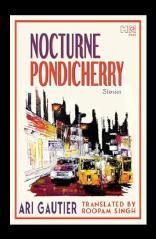
In "Nocturne Pondicherry: Stories," Ari Gautier explores the hidden depths of Pondicherry, a city renowned for its serene beaches and cultural richness but concealing darker truths beneath its charming exterior Through a collection of seven poignant short stories, skillfully translated into English by Roopam Singh, Gautier delves into these obscured corners Each narrative meticulously uncovers the complexities of everyday life, exposing profound human struggles and societal challenges that linger in the shadows of this post-colonial Indian town Gautier's storytelling prowess shines as he intricately weaves together tales that resonate deeply with the reader's emotions and intellect Through characters that shows confusion between heart and mind in “Malarvizhi" and Viji confronting trauma by the shore, Gautier illuminates the complexities of personal identity and societal pressures. These characters, vividly brought to life against the backdrop of Pondicherry's cultural tapestry, navigate themes of belonging, cultural heritage, and personal transformation. Roopam Singh's translation preserves Gautier's lyrical prose and vivid imagery, allowing English-speaking readers to experience the richness of Pondicherry's nocturnal landscapes and the intricate emotional landscapes of its inhabitants The seamless translation ensures that the essence and depth of Gautier's narratives are retained, making this collection accessible and compelling The anthology's strength lies in its ability to confront uncomfortable truths with unflinching honesty Gautier tackles issues ranging from exploitation and substance abuse to historical injustices and societal divisions His narratives are not merely tales but windows into the underbelly of a city where joy and sorrow intertwine, often under the cover of night Each story serves as a poignant reminder of the human capacity for resilience amidst adversity "Nocturne Pondicherry: Stories" is more than just a literary work; it is a reflection on the human condition, offering readers a glimpse into lives rarely portrayed in mainstream narratives. Gautier's exploration of Pondicherry's nocturnal undercurrents challenges readers to confront the complexities of societal norms and personal identity.
This 110-page anthology is a must-read for anyone drawn to evocative storytelling and a deeper understanding of contemporary Indian literature.

Neelima Dalmia Adhar's "Radha: The Princess of Barsana" explores this timeless narrative with emotional depth, set in Barsana where Radha, constrained by societal norms and a loveless marriage, is drawn to Krishna since childhood The love story of Radha and Krishna, a profound fusion of divine love and cultural significance symbolizes unity of soul with the Supreme Soul, celebrated in Hindu philosophy, art, and literature like the Bhagavata Purana and Gita Govinda Radha's devotion and Krishna's wisdom teach deep lessons on love and spirituality, resonating across generations From the moment Radha cradles infant Krishna, a surreal bond pulses between them, a connection that only deepens as they mature Their love transcends lifetimes, but societal norms condemn Radha as an adulteress for her unwavering devotion to Krishna This conflict culminates in a dramatic trial before the village panchayat, where Radha faces accusations of scandal and disgrace. The book’s narration captures the complexity and intensity of Radha and Krishna's relationship with raw authenticity. This is no sanitized tale but a gripping portrayal of their ecstatic love, heartrending separation, and the societal condemnation that challenges their divine connection. Radha emerges not merely as a mythological figure but as a flesh-and-blood woman whose courage and passion resonate profoundly Neelima Adhar's prose breathes life into Radha, portraying her as a courageous and unapologetic princess who defies convention for the sake of love Through vivid descriptions and emotive storytelling, Adhar immerses readers in Radha's world, where every emotion joy, longing, and heartbreak is palpable The author's portrayal of Radha's internal conflicts and unwavering love for Krishna captivates, making Radha: The Princess of Barsana an unputdownable exploration of love's power to defy societal norms and endure adversity For lovers of mythological romance and those drawn to narratives that delve deep into human emotion, Radha: The Princess of Barsana offers a touching and captivating journey.
Adhar's masterful retelling not only celebrates the eternal love of Radha and Krishna but also invites readers to reflect on the enduring power of love in all its forms.
"Revolutionaries on Trial: Sedition, Betrayal, and Martyrdom" is a groundbreaking study by historian Aparna Vaidik that delves into the infamous Lahore Conspiracy Case, focusing on the principal martyrs Bhagat Singh, Sukhdev, and Rajguru, members of the Hindustan Socialist Republican Army (HSRA). This

meticulously researched work sheds light on the trial, which began on July 23, 1929, in Lahore Central Jail, culminating on October 7, 1930, when the judge pronounced the young revolutionaries guilty of conspiring and waging war against the British crown Sentenced to death, these men became icons of India's struggle for independence, their story often told as one of grave injustice under colonial rule The book challenges the traditional narrative of the Lahore Trial as merely a miscarriage of justice Instead, "Revolutionaries on Trial" broadens the historical scope by examining the roles of four key groups: the colonial state as the plaintiff, the revolutionaries as defendants, the prosecution witnesses, and the Indian press and the public as spectators This multifaceted approach reveals the complex motivations and aspirations of each group, illustrating that the trial was more than a courtroom drama it was a multifaceted performance unfolding across various locations, including investigation offices, government buildings, jails, streets, and even universities across North India. Author/Historian Aparna Vaidik in her book raises provocative questions about the colonial state's decision to hold a trial despite its capacity for violence, the revolutionaries' trial strategies beyond propaganda, and the implications of acts of collaboration such as spying and informing Vaidik explores how these actions, often laden with moral judgment, influenced public perception and the revolutionary movement itself The trial, she argues, significantly impacted how the revolutionaries were viewed, both by their contemporaries and by history "Revolutionaries on Trial" is written with great honesty and grounded in impeccable scholarship, bringing to life the dramatic events and key figures of the Lahore Conspiracy Case The author vividly portrays the young revolutionaries' defiance, the colonial state's repressive measures, and the broader social and political contexts of late 1920s and early 1930s India
This compelling story not only recounts the trial's events but also examines its lasting legacy on India's nationalist movement, highlighting the enduring inspiration of figures like Bhagat Singh in contemporary political movements.
Nandini Krishnan's translation of Kalki's epic historical fiction series, "Ponniyin Selvan," continues to captivate readers with the third installment, "River Prince " This adaptation skillfully maintains the essence of Kalki's narrative while ensuring accessibility for modern readers, enriching the storytelling
with historical context and cultural nuances that breathe new life into the ancient Chola dynasty. In "River Prince," the saga of Arulmozhi Varman, known as Ponniyin Selvan, unfolds against a backdrop of political intrigue and personal vendettas Krishnan adeptly navigates the intricate web of alliances and rivalries within the Chola court, where every decision holds profound consequences for the empire's future At the heart of the narrative is Ponniyin Selvan's quest to untangle conspiracies that threaten his family and kingdom, a journey fraught with danger and betrayal Central to the plot is the enigmatic Poonguzhali, a fearless boat girl whose courage and resourcefulness prove indispensable in the unfolding drama Her character evolves alongside Ponniyin Selvan's, their fates intertwined amidst the swirling currents of war and ambition As alliances shift and secrets unravel, Krishnan's translation skillfully captures the tension and intrigue that propel the story forward The translation of "River Prince" not only preserves Kalki's masterful storytelling but also enhances it with detailed descriptions and evocative prose. Characters like Princess Kundavai and the formidable Nandini add depth and complexity, their conflicts contributing to the narrative's rich tapestry. As revelations about Emperor Sundara Chola's past emerge, the narrative gains momentum, drawing readers deeper into the turbulent world of ancient India. Author Nandini Krishnan's dedication to faithfully rendering Kalki's work into English ensures that "River Prince" stands as a compelling testament to the enduring appeal of historical fiction
For readers seeking a captivating blend of drama, mystery, and historical authenticity, this translation offers an immersive journey into a pivotal era of South Indian history, where the quest for power and honor unfolds amidst the grandeur and intrigue of the Chola empire.
"Shadows Rising" by Rohan Monteiro is a captivating blend of Indian mythology and urban fantasy, set in the vibrant city of Mumbai. The story centers on Akran, a once-powerful yaksha who has been exiled from the celestial court for an unspeakable crime Now, Akran spends his days drinking cheap rum and pretending to be human, a

shadow of his former self His exile seems destined for endless monotony until the shocking abduction of a young girl forces him out of his self-imposed isolation. Thrust into a world of villainous thugs, ancient gods, and demons, Akran must confront not only the dark forces at play but also the buried secrets of his past. Monteiro's skillful writing breathes life into this mythological world, seamlessly integrating fantasy and sci-fi elements into a contemporary urban setting. Akran, described as an "unlikely hero" who is irreverent, witty, and foul-mouthed, emerges as a complex and engaging protagonist His journey from apathy to action, driven by a series of gripping plot twists and revelations, forms the backbone of this novel The interplay of humor and suspense keeps readers hooked, making it tough to put the book down once you begin Monteiro's writing brings a fresh and exhilarating energy to the fantasy genre, with vivid descriptions that transport readers into the heart of Mumbai's bustling streets and mythical underworld The book's cover is a blend of color, clarity, and fantasy and engages the readers along with the story The novel's exploration of themes such as identity, morality, and the human condition is both thought-provoking and entertaining Monteiro adeptly balances darker themes with moments of levity, creating a narrative that is as deep as it is enjoyable. The mythology referenced in the book, new to many readers, adds an intriguing layer of cultural depth. Akran's evolution from a cynical outcast to a determined hero tasked with saving his beloved city highlights the strength of the character development. To sum up, "Shadows Rising" offers a fresh and unique take on timeless Indian myths, told through the eyes of a protagonist deeply entwined with the epics Monteiro's blend of mythology, fantasy, and mystery, coupled with his engaging writing style, makes this novel a standout
Fans of fantasy, mythology, and urban adventure will find much to enjoy in this well-crafted story, and it's highly recommended for anyone seeking an exhilarating and thought-provoking read.

"Simha's Roar" marks the exhilarating conclusion to Arun Krishnan's epic trilogy, "The Battle of Vathapi," plunging readers deep into the heart of ancient India's most pivotal clash Set against the backdrop of the 7th century, the Pallavas, reeling from devastating defeats at Korkai, Parivipura, and Asanur, face an existential threat from the advancing Chalukyan forces. Led by three valiant captains Kannan, Elango, and Muthuvel the Pallavas muster their dwindling resources to counter the Chalukyan onslaught and reclaim honor lost in battle. At the center of this maelstrom stands Pallava King Narasimhavarman, driven by a solemn oath to his dying father and fueled by a fierce determination to confront his formidable adversary, Chalukya King Pulikeshi. As tensions escalate and armies converge near Vathapi, Krishnan masterfully weaves a narrative of honor, revenge, and the weight of ancient promises Can Narasimhavarman defy the odds and alter the course of history against the seemingly invincible Pulikeshi? Arun Krishnan's storytelling prowess shines in "Simha's Roar," delivering a riveting tale that transcends mere battlefield clashes Through meticulously researched details and vivid prose, he paints a vivid tableau of an era where loyalty and courage were paramount virtues Readers are immersed in the strategic intricacies of ancient warfare, where every decision holds the fate of kingdoms and the lives of warriors in delicate balance Beyond the gripping military maneuvers, Krishnan delves into the personal journeys of his characters each grappling with love, loss, and the moral complexities of war From the camaraderie of battle-hardened captains to the anguish of those left behind, every emotion resonates in the narrative, drawing readers deeper into the human drama behind the epic clashes. "Simha's Roar" stands not just as a thrilling conclusion to a trilogy but as proof of Krishnan's ability to breathe life into history. His depiction of the Battle of Vathapi resonates with authenticity and grandeur, capturing the imagination with its evocative descriptions of ancient landscapes and the clash of empires
For fans of historical fiction steeped in rich cultural tapestries and dramatic storytelling, this finale is a triumph a poignant reminder of the enduring legacy forged on the anvil of war.
"Take No 2020 – The matter of all retakes" by Puneet Sikka is a gripping and acerbic novel that masterfully blends humor and grief into a captivating narrative Set against the backdrop of the tumultuous year marked by the COVID-19 pandemic, the book follows a diverse

group of characters as they navigate personal and professional challenges Through their interconnected stories, Sikka delves into themes of identity, morality, and the human condition, providing a thought-provoking exploration of what it means to be a hero or villain in one's own life Author Sikka's writing is lauded for its sharp wit and adeptness at balancing the somber with the absurd The novel has been aptly described as a maze delving into the complexities of reality versus perception The narrative's strength lies in its ability to question the nature of reality and challenge readers' beliefs about their own lives. The author's skillful handling of sensitive subject matter, including the #MeToo allegations surrounding the character Micky Taneja, further enriches the story, making it both compelling and poignant. The characters in "Take No. 2020" are richly written and their stories are deeply intertwined. Meera, who has just landed her first big Bollywood film, struggles with the highs and lows of her career Dabloo, fighting to make ends meet, experiences both the lowest and highest points of his professional journey Aspiring TikTok star Jayesh discovers his true calling in the most unexpected ways, while Micky Taneja, entangled in scandal, seeks redemption and true love As their paths collide, broken relationships give way to unexpected connections, and repressed pasts resurface, forcing each character to confront their true selves Overall, "Take No 2020" is a compelling and thoughtprovoking read that offers a unique perspective on the events of a tumultuous year Readers have praised the book's gripping plot and Sikka's ability to weave humor into a narrative steeped in grief and complexity
The novel stands out for its insightful exploration of the human experience during a global crisis, making it a must-read for anyone seeking a deeper understanding of the challenges and triumphs that defined 2020.
Timothy W Ryback’s “Takeover: Hitler’s Final Rise to Power” is a compelling and meticulously researched account of how democracy in Germany met its tragic demise Ryback masterfully narrates the critical months when Adolf Hitler consolidated his power, drawing chilling
lessons for contemporary times The narrative meticulously details how Hitler’s rise to absolute power was achieved legally, transforming from a hypernationalistic right-wing fanatic to the leader of the National Socialists, a legitimate political party by the 1930s. The book's comfortable font and the strength added by its photographs and illustrations significantly enhance the reader’s experience. Ryback focuses on the pivotal moments of July 1932, when the Nazi Party won 37% of the vote, making Hitler a legitimate candidate for chancellor Germany’s conservative establishment, including President Paul von Hindenburg, shared Hitler’s hatred of communism and the Treaty of Versailles Despite Hindenburg's initial refusal to appoint Hitler, the escalating fear of a communist revolution and rampant unemployment drove conservatives to believe they could control Hitler if he became chancellor This period of desperation and miscalculation set the stage for Hitler’s ultimate ascendancy to power The book vividly captures the fanaticism and violence of the Nazis, which never diminished despite their political success Ryback highlights how the conservative establishment's gamble backfired spectacularly, leading to Hitler's rise to absolute power and the subsequent collapse of German democracy The narrative serves as a stark reminder of the fragility of democracies and the perils of compromising principles for short-term gains. Through meticulous research and evocative prose, Ryback presents a gripping account of these dark historical moments. In “Takeover: Hitler’s Final Rise to Power,” Ryback’s engrossing and intimate writing style is complemented by a clock-ticker narrative that meticulously documents the behind-the-scenes machinations propelling Hitler to power The human elements of luck, ambition, and fallibility are brought to life, allowing readers to connect deeply with the historical characters Drawing from previously inaccessible archival materials, Ryback offers fresh insights into Hitler’s life and the complex web of deals, alliances, and betrayals that characterized this period
The book’s comfortable font and powerful photographs and illustrations further enhance the immersive experience, making it a crucial read for understanding the perilous trajectory of democratic collapse.
Ismail Darbesh's Bengali novel "Talashnama", translated into the English language by V Ramaswamy delves into the intricate layers of identity, love, and societal expectations within the backdrop of a Muslim-majority village in West Bengal The novel unfolds around Riziya, a strong-willed woman whose life is upended when she

elopes with her Hindu tutor, Suman Nath, despite the rigid norms of her community. Set against the backdrop of Sadnahati, a conservative village grappling with modernity, Riziya's decision to follow her heart sparks controversy and condemnation The narrative explores the complexities of being Muslim in contemporary India, where love collides with religion and tradition clashes with personal freedom The story portrays Riziya's internal conflict as she navigates between her affection for Suman and the societal pressures that threaten to suffocate her individuality "Talashnama" clearly illustrates the collision of Riziya's progressive outlook with the entrenched values of her village Her elopement with Suman, a Hindu, serves as a catalyst for introspection and resistance against the societal norms that seek to define her The novel skillfully portrays the tension between modernity and tradition, offering a nuanced portrayal of the cultural and religious divides that shape Riziya's journey The novel explores themes of love, religion, and identity in the context of Riziya's quest for self-discovery. Darbesh's portrayal of Riziya's internal turmoil, exacerbated by accusations of religious misconduct, reflects the political climate and societal prejudices in India. The novel invites readers to contemplate the complexities of personal autonomy and cultural belonging in a rapidly changing world. Riziya's return to Sadnahati serves as a reminder of the struggles she faces in reconciling her choices with community expectations Thus, Ismail Darbesh's "Talashnama" is a poignant portrayal of one woman's journey to define herself against the backdrop of cultural tradition and societal judgment
With its rich characterization and evocative setting, the novel captivates with its exploration of love's defiance and the enduring quest for personal identity in the face of community scrutiny.

Åsne Seierstad's "The Afghans: Three Lives Through War, Love, and Revolt," the book unfolds through the intertwined stories of three compelling individuals, each emblematic of Afghanistan's tumultuous landscape. Firstly, we meet the Talib, whose narrative unveils the ideological fervor driving the Taliban movement Seierstad immerses us in their world, offering insights into their strict interpretation of Islamic law and the motivations behind their actions. Through the Talib's perspective, readers gain a deeper understanding of religious extremism's grip on Afghan society and its profound implications. Contrasting sharply with the Talib is the Fugitive from the Taliban, whose harrowing journey from oppression to freedom forms another poignant thread in the narrative. Their escape is fraught with peril, illuminating the stark realities faced by those fleeing conflict and persecution Seierstad sensitively portrays the sacrifices made and the resilience required to survive in a country torn apart by war, offering a compelling testament to the human spirit's endurance Lastly, the Everyday Afghan provides a lens into the lives of ordinary people navigating the complexities of daily existence amidst ongoing turmoil Their stories resonate with the joys, sorrows, and mundane routines that define Afghan life, offering a poignant reflection of resilience amid adversity Through their experiences, Seierstad captures the broader impact of historical events and political upheaval on individuals striving for stability and hope Seierstad's skillful narrative intertwines these three lives, painting a vivid portrait of Afghanistan's recent history and the profound challenges facing its people. "The Afghans" not only delves into the personal struggles and triumphs of its protagonists but also sheds light on the broader sociopolitical landscape, making it an essential read for anyone seeking to grasp the complexities of contemporary Afghan society.
Reading about the ancient history of Egypt and Cleopatra is immensely important for understanding the foundations of Western civilization, the complexities of political power, and the cultural advancements of one of history's most fascinating

civilizations. Cleopatra’s reign, in particular, provides insights into the interplay between politics, gender, and identity, as well as the interactions between different cultures and empires. Her story, entwined with the end of the Ptolemaic Kingdom and the rise of the Roman Empire, highlights significant historical shifts and the timeless themes of ambition, power, and legacy. Understanding this rich historical context enriches our appreciation of modern societal structures and the enduring impact of ancient civilizations Lloyd Llewellyn-Jones' “The Cleopatras: The Forgotten Queens of Egypt” provides a comprehensive history of Cleopatra, one of the seven Ptolemaic queens The author highlights the misinformation surrounding Cleopatra VII, highlighting her as the final member of a dynasty of exceptional female rulers The Cleopatras, a dynastic power broker in antiquity, were known for their ambition, tenacity, and brutality Their name, meaning 'the glory of her father', was associated with Greek legends The book follows Cleopatra I's rise from a bride to a regent after her husband's assassination, setting the stage for future Cleopatras The book also explores the dynastic shenanigans of Cleopatra II and her daughter, Cleopatra III, who ruled for 39 years, establishing her own authority. Two of her daughters participated in the Grand Guignol spectacles, with Cleopatra V Berenice III being killed by Ptolemy XI. Egyptian evidence suggests Cleopatra VI Tryphaina was the mother of Cleopatra VII, and two other daughters died violently. In recounting the story of the Cleopatras, Llewellyn-Jones recreates Hellenistic Egypt of the time, with its blend of Egyptian and Greek cultures and Mediterranean-centered political dynamics This is set against Rome's ever-increasing interventionism, which would finally lead to the demise of pharaonic Egyptdespite Cleopatras' manipulations
By telling the stories of each of the seven queens and their Syrian counterparts, the author contextualizes Cleopatra VII's life and achievements - the last in a long line of extraordinary ruling women who deserve to be recognized as significant players in Hellenistic world politics.
Certain historical events leave an indelible mark on humanity, altering lives forever
Depending on the nature of these incidents, their impact can vary In Indian history, following the harrowing tales of Partition, events such as Operation Blue Star, which culminated in the 1984 Sikh Riots, are
among those that have left lasting wounds that remain fresh even today. In this connection, "The Kaurs of 1984: The Untold, Unheard Stories of Sikh Women", by author Sanam Sutirath Wazir brings to the forefront the harrowing experiences of Sikh women during the anti-Sikh riots in Delhi in 1984. Through a tapestry of extensive interviews and historical research, Wazir pieces together the scattered and often overlooked stories of grief, betrayal, and loss endured by these women. This book serves as a powerful and moving account of the gendered violence that erupted during this dark chapter in Indian history Wazir’s narrative sheds light on the grim reality faced by Sikh women as they navigated the chaos and danger that enveloped Delhi The conversations with survivors reveal heart-wrenching tales of women hiding or desperately searching for safety with their children Those unfortunate enough to be caught by the mobs faced abduction or rape, adding to the already devastating impact of the riots The author draws a poignant parallel between the 1984 riots and the Partition violence of 1947, underscoring the cyclical nature of gendered violence in times of political unrest One of the striking aspects of Wazir's work is the focus on how societal pressures further silenced these women Families often forced them to remain silent to protect the family’s honor, fearing social ostracization if the truth were revealed. This systemic silencing compounded the trauma, as these women were denied the opportunity to speak out and seek justice. The book delves into the historical timeline of the attacks, detailing how mobs targeted gurdwaras and Sikh establishments, and mercilessly killed Sikhs, particularly those from lower-income backgrounds living in slum colonies in the trans-Yamuna area Wazir’s research takes him across North India, where he meets numerous women who lived through these harrowing events These women, many of whom continue to fight invisible battles for justice, share their stories of grief and resilience The book finally brings Sikh women out of the shadows of contemporary Indian history, giving them a voice and ensuring their stories are heard It is a powerful testament to their strength and an essential addition to the historical record of the 1984 riots The personal accounts within the book are both heartwrenching and empowering Through these oral histories, readers hear the voices of those who survived, those who
lost loved ones, and those who have continued to fight for justice Among them is Mustafa, who witnessed chaos in Trilokpuri, where human bodies burned in bonfires She spent a day at the railway station counting the bodies of Sikhs who were pulled from trains, burned alive, and placed back in the coaches, tallying 200 dead in one day The book also includes an interview with Dr Gurdeep Kaur, daughter of the late President Giani Zail Singh, who recalled feeling scared and threatened during that tumultuous period Wazir’s evocative prose captures the emotional depth of each woman’s journey, painting a vivid picture of their trauma, resilience, and solidarity The book does not shy away from the brutality faced by these women but also highlights their strength and determination to overcome such adversity In conclusion, "The Kaurs of 1984" is a poignant and necessary exploration of the untold stories of Sikh women during a dark chapter in Indian history. Wazir’s meticulous research and compassionate storytelling not only chronicle their suffering but also celebrate their resilience and courage. This book is essential reading for anyone interested in understanding the human cost of political violence and the indomitable spirit of those who survived it.
Sanam Sutirath Wazir’s compassionate storytelling will leave a lasting impact on readers, ensuring that the stories of the Kaurs of 1984 are never forgotten.

"The Last Bloodcarver" by Vanessa Le is a captivating debut that blends intricate world-building with a poignant exploration of identity and belonging Set in a lush, Vietnam-inspired fantasy world, the novel follows Nhika, a skilled bloodcarver whose ability to manipulate human biology has made her both feared and sought after in the industrial city of Theumas. Forced into secrecy, Nhika uses her forbidden magic to heal underprivileged citizens, barely scraping by until a twist of fate lands her in the hands of an aristocratic family. Protagonist Nhika’s journey is a reflection of resilience and the search for acceptance amidst societal rejection. As she navigates her new life within the aristocratic circles of Theumas, Nhika grapples with her identity as an outsider and a bloodcarver an individual reviled for her powers, which are both feared and misunderstood Le adeptly portrays Nhika’s internal struggle, weaving themes of diaspora and cultural displacement into the narrative, offering a refreshing exploration of these complex experiences in a second-world fantasy setting One of the novel’s strengths lies in its nuanced portrayal of diaspora through the characters of Nhika and Ven Kochin Nhika, with her roots deeply tied to a past she can no longer openly embrace, finds herself torn between survival and reclaiming her heritage In contrast, Ven Kochin, initially a figure of privilege and entitlement, undergoes a transformation that challenges his preconceived notions about power and identity Their evolving relationship from rivals to tentative allies and possibly more adds depth and emotional resonance to the narrative. Vietnamese author Vanessa Le’s world-building is richly detailed, drawing readers into a vibrant and atmospheric cityscape where magic and technology intertwine. The medical-based magic system of bloodcarving, central to the plot, is both intriguing and skillfully integrated into the storyline, adding layers of complexity to Nhika’s character arc as she grapples with the ethical implications of her abilities. Overall, "The Last Bloodcarver" is a standout young adult fantasy that deftly combines elements of mystery, romance, and social commentary With its compelling characters and a narrative that delves into themes of prejudice, identity, and the power of language, Le’s debut promises both entertainment and thought-provoking depth
Fans of atmospheric fantasy worlds and complex character dynamics will find much to savor in this captivating novel, which sets the stage for a promising duology.
"The Lion and The Lily: The Rise and Fall of Awadh" by Ira Mukhoty, published by Aleph Book Company, offers a compelling historical narrative of Awadh's rise and fall through the lives of its prominent figures, notably the Nawabs of Awadh and key

personalities from the Delhi court. Mukhoty intricately weaves together the political intrigues and cultural dynamics of 18th-century India, painting a vivid portrait of a tumultuous era marked by conquests, alliances, and colonial pressures. The book delves deep into the lives of figures like Saadat Khan, Safdar Jang, Shuja-ud-Daula, Asaf-ud-Daula, and Wazir Ali Khan, illuminating their roles in shaping Awadh's destiny amidst the backdrop of European encroachment and internal power struggles Mukhoty also explores the interactions between Awadh and the Delhi court, featuring rulers such as Muhammad Shah 'Rangeeley' and Shah Alam II, as well as influential figures like Mirza Jawan Bakht and Najaf Khan These narratives are richly contextualized against the backdrop of pivotal events such as the Battle of Plassey, the Treaty of Paris, and the broader geopolitical shifts that shaped India's fate By meticulously researching primary sources and employing a narrative style that blends historical analysis with vivid storytelling, Mukhoty brings to life the complexities of Awadh's socio-political landscape She challenges conventional Eurocentric interpretations of Indian history, emphasizing the region's cultural legacies, including Shia rituals, the evolving role of women, and the influence of European artists like Johann Zoffany and William Hodges. "The Lion & the Lily" not only offers a comprehensive exploration of Awadh's history but also serves as a poignant reminder of the intricate tapestry of power dynamics and cultural exchanges that defined colonial India.
Mukhoty's work is a testament to her scholarly rigor and storytelling prowess, making it an essential read for anyone interested in understanding the nuanced complexities of India's past.
The Midnight Feast by Lucy Foley is a mindbending psychological thriller that delves into themes of personal identity, social influence, and redemption Known for her bestselling novels The Guest List and The Paris Apartment, Foley's latest book does not disappoint Set against the backdrop of
an exclusive resort opening on the Dorset coast, the novel blends mystery and suspense with an eerie atmosphere, promising readers a captivating journey. While the characters in The Midnight Feast may not win any popularity contests, their complexities and flaws are what make them so compelling. The story is narrated from multiple perspectives, including Francesca, the resort owner; Owen, her architect husband; Bella, a guest with hidden motives; Eddie, a local employee; and DI Walker, the investigating officer This diverse cast allows readers to see events from various angles, deepening the intrigue Despite their lack of likability, Foley's characters engage readers, challenging them to find empathy and understanding The author employs multiple narrators and a diary format to unravel the plot, shifting between three significant time periods This structure, though sometimes abrupt, adeptly keeps the reader guessing The diary entries provide crucial insights into past events, while the present-day narrative builds tension as the opening of The Manor reaches its dramatic climax Foley's skillful handling of these timelines creates a seamless and engaging reading experience The Midnight Feast is filled with unexpected twists and turns that keep the suspense simmering Foley masterfully delays revealing key secrets until the very end, ensuring a satisfying closure where justice is served. The story's pacing is well-managed, building up to the solstice feast and the subsequent discovery of a body. While some supernatural elements may not appeal to all readers, they add an extra layer of creepiness that enhances the overall atmosphere of the story. Finally, Lucy Foley's work, The Midnight Feast has left a lasting impression on many readers. Foley’s ability to intertwine past and present events, while maintaining suspense and delivering a satisfying conclusion, makes this novel a must-read for fans of psychological thrillers
“The Midnight Feast” is proof of Foley's talent and cements her status as a master of modern suspense fiction.
In Kaliane Bradley's debut novel, "The Ministry of Time," readers are whisked into a near-future London where a clandestine government agency retrieves historical figures referred to as "ex-pats" from the past At the heart of the story is an unnamed British-Cambodian woman who serves as a liaison, or "bridge," helping

these displaced individuals navigate the complexities of modern-day life. The central figure among these timetravelling enigmas is Commander Graham Gore, a real-life 19th-century naval officer and polar explorer. Bradley skillfully blends historical accuracy with speculative fiction, presenting Gore's adjustment to contemporary London as both humorous and insightful The debut cross-genre book "The Ministry of Time" examines issues of sexual orientation and racism The plot centres on past characters who are transported to the present to comprehend the psychological, emotional, and physical effects of their passing As the personnel of the Ministry attempt to safeguard displaced people, there are espionage and romantic triangles for fans of romantic comedies The novel unfolds as a genredefying blend of romance, thriller, and speculative fiction, underscored by Bradley's sharp wit and keen social commentary Through Commander Gore's eyes, readers are treated to poignant observations on the absurdities of modern technology and societal norms, juxtaposed against his Victorian sensibilities. This juxtaposition not only entertains but also prompts reflection on themes of identity, heritage, and the enduring impacts of colonialism. Bradley's writing prowess shines through her adept handling of multiple genres within a cohesive storyline. As the plot thickens and dangers escalate, the novel maintains its gripping pace, offering both suspenseful twists and thoughtprovoking insights into the ethical implications of time travel The characters, particularly Commander Gore, are brought to life with depth and nuance, making their journey through time and across cultural boundaries thoroughly engaging "The Ministry of Time" showcases Bradley's skill as a storyteller, blending historical intrigue with contemporary relevance
For readers seeking a novel that challenges conventions and leaves a lasting impression, Bradley's imaginative exploration of time, identity, and human connection offers a compelling and thoroughly enjoyable read

Manjiri Prabhu’s “The Mystery of the Portuguese Hearts” unfolds amidst the picturesque vineyards and historic estates of Portugal, where the tranquillity of Filipa Monteiro’s life is shattered by a violent attack on her beloved grandfather, Ricardo His enigmatic last words set the stage for a gripping narrative woven with threads of thriller, suspense, and romance against the backdrop of Portugal’s lush wine country. Manjari Prabhu deftly integrates the cultural richness of Portugal through the lencos, traditional love handkerchiefs embroidered with cryptic clues that lead investigative journalist Re Parkar and Filipa on a riveting quest for truth. In the most recent Re Parkar destination thriller, the tension between suspense and surprise is resolved in an unexpected but rewarding way amidst the beautiful landscapes of Portuguese sands At its core, “The Mystery of the Portuguese Hearts” explores themes of love, resilience, and the relentless pursuit of truth The characters are intricately crafted, each carrying their own burdens and desires amidst the taste of Portugal’s cultural heritage As Re and Filipa unravel the secrets hidden within Ana’s lencos, they confront a web of deceit and betrayal that threatens to engulf them From the historic Carnation Day revolution to present-day intrigue, Prabhu seamlessly blends historical events with a suspenseful narrative, keeping readers on edge with every twist and turn The novel’s strength lies in its ability to transport readers not only through its gripping plot but also through vivid descriptions of Portugal’s landscapes and traditions. Manjari Prabhu’s meticulous research and personal exploration shine through, offering a deep immersion into the country’s vibrant settings and the emotions of its people. As Re and Filipa race against time, the novel evolves into a tale of psychological suspense, where the echoes of a haunting past resonate with themes of sacrifice and redemption. Author Manjari Prabhu’s immersive writing style seamlessly blends the allure of destination, the weight of history, and the intrigue of mystery like in her previous books Tension and suspense mount steadily across the narrative, drawing readers deeper into the unfolding drama Her characters are richly developed, and her engaging, descriptive prose vividly paints each scene, ensuring readers become fully immersed and emotionally invested in the story “The Mystery of the Portuguese Hearts” is another example of Manjari Prabhu’s narrative prowess, weaving intricate plotlines with compelling characters against a backdrop that feels alive with history and intrigue Whether you’re captivated by international mysteries, drawn to stories of romance and redemption, or simply seeking a thrilling read that transports you to distant lands, this novel promises an unforgettable journey that lingers in the mind long after the final page is turned.
Holly Black's "The Prisoner's Throne: A Novel of Elfhame" duology returns to the fae realms from her Folk of the Air trilogy, concentrating on Jude's younger brother and a new character, Wren Despite being a YA novel, the series falls into grimdark

terrain, creating an engrossing and ethically problematic story. The volumes may be appreciated on its own, although being familiar with the Elfhame realm enriches the experience. The series incorporates references to previous events from the Folk of the Air series, resulting in an intricate web of interrelated storylines. "The Stolen Heir" and "The Prisoner's Throne" tell a continuous story of intrigue and treachery, with tensions rising to war Oak and Wren emerge as compelling protagonists, each grappling with their own burdens and responsibilities Oak, groomed for leadership but hesitant to wield power, navigates a world where trust is a scarce commodity Wren, scarred by torture and distrustful of others, struggles with her own demons while maneuvering through political machinations Black masterfully shifts between the fae realms and the mortal world, using each setting to illuminate different facets of her characters The juxtaposition provides a nuanced exploration of identity and circumstance, highlighting how the environment shapes perceptions and decisions This dynamic adds layers of realism to the fantastical narrative, drawing readers deeper into the characters' struggles and triumphs. "The Prisoner’s Throne" not only continues the saga of Elfhame with gripping political intrigue but also delves into the personal journeys of Oak and Wren. Their evolving relationship, fraught with tension and mutual misunderstanding, drives the narrative forward, offering moments of both heartache and hope. Black’s skillful storytelling and vivid prose ensure that each page brims with suspense and emotional resonance Overall, "The Stolen Heir" duology reaffirms Holly Black’s mastery of the fantasy genre, delivering a tale that is as enchanting as it is darkly compelling
For fans of young adult fantasy filled with intricate world-building, complex characters, and labyrinthine plots, this series is a must-read.
Holly Jackson's The Reappearance of Rachel Price presents a gripping young adult thriller that intricately weaves family secrets, trust, and the pursuit of truth The novel centers on 18-year-old Bel Price, whose mother, Rachel, vanished under mysterious circumstances 16 years prior
The plot thickens as Rachel unexpectedly returns during the filming of a documentary about her disappearance, bringing old wounds and new tensions to the forefront. Jackson masterfully blends past and present, crafting a story that keeps readers on the edge of their seats. At the heart of the novel is Bel Price, a determined and resilient protagonist whose life has been overshadowed by her mother’s disappearance. Bel's skepticism towards Rachel’s inconsistent story upon her return highlights her journey of uncovering hidden truths and confronting her family’s tumultuous past Rachel Price emerges as an enigmatic figure, her return cloaked in mystery, forcing the family to confront long-buried secrets Supporting characters like Charlie Price, Bel’s father, and Ramsey Lee, the filmmaker, add depth to the narrative, each playing crucial roles in unraveling the mystery The Reappearance of Rachel Price has been lauded for its compelling plot and well-developed characters The novel by Holly Jackson explores themes of trust, identity, and memory, with Bel's struggle to believe her mother's story as a focal point It delves into themes of deception, identity, and memory, questioning how past events shape perceptions The story highlights resilience and courage, as Bel's relentless pursuit of truth despite emotional and physical dangers underscores these themes. Jackson's writing is taut and suspenseful, with a well-paced narrative that builds to a thrilling climax. In conclusion, Holly Jackson has crafted a masterful thriller that combines mystery, emotional depth, and psychological intrigue. The Reappearance of Rachel Price is a must-read for fans of young adult thrillers and anyone who enjoys a well-crafted mystery.
The novel’s unexpected plot twists and rich character development make it a standout in the genre, offering a thought-provoking exploration of trust, memory, and the impact of unresolved pasts.
The biggest bank robbery in the capital hit the headlines Rs 60 lakhs was spirited away from the State Bank of India on Parliament Street under mysterious circumstances The mystery deepened with the alleged involvement of members of the Prime Minister's secretariat and officials in the bank. “The Scam That Shook a Nation”
–

The Nagarwal Scandal" by Rasheed Kidwai and Prakash Patra is a compelling exploration of one of India's most infamous fraud cases, the Nagarwala scandal of 1971 At the heart of this gripping narrative is the audacious deception orchestrated by Rustom Sohrab Nagarwala, an official at the State Bank of India Posing as Prime Minister Indira Gandhi, Nagarwala convinced bank staff to withdraw a staggering sum of ₹60 lakhs under false pretenses, sparking a nationwide scandal that exposed vulnerabilities within institutions and ignited widespread debate Both the authors meticulously unravel the layers of deceit that characterized the Nagarwala case. From Nagarwala's clever impersonation tactics to the swift fallout and subsequent investigations, the authors provide a detailed account based on police records, press reports, and depositions before the Justice Jaganmohan Reddy Commission. They delve into the trial's controversial aspects, including Nagarwala's abrupt confession and the lingering suspicions surrounding the true motives behind the scam Beyond the sensational headlines, "The Scam That Shook a Nation" offers a nuanced examination of political corruption and institutional integrity Kidwai, a seasoned journalist and political analyst, brings his expertise to bear on the complexities of the case, while Patra's journalistic background adds depth to their investigative approach The book not only chronicles the events that rocked India in 1971 but also provides insights into how such scandals resonate in the country's political and social fabric decades later With its meticulous research and compelling narrative, "The Scam That Shook a Nation" stands as a definitive work on the Nagarwala scandal
It sheds light on the vulnerabilities of governance and the enduring impact of deception on public trust, making it an essential reading for anyone interested in India's history of political scandals and the dynamics of corruption in public institutions.
Author Africa Brooke's recent book - "The Third Perspective – Brave Expression in the Age of Intolerance," addresses the urgent need for open-mindedness and empathy in today's polarized society This self-help book urges readers to listen and be receptive to differing opinions Brooke's
central message is that every viewpoint is backed by a real person with their own story, and understanding their journey is crucial for meaningful dialogue. She highlights that the aim isn't always to agree but to appreciate where others are coming from, demonstrating that you hear them and are open to their perspective without instant negative judgment. The book stands out with its powerful cultural edge. In a time when cancel culture and social media scrutiny amplify divisions, she challenges readers to look their own biases in the eye and break free from self-censorship Brooke's approach to fostering honest, valuable conversations is both timely and necessary She delves into how to cultivate a culture of genuine communication, urging readers to listen actively and remain open to differing viewpoints while also building strength and confidence in their own voices and beliefs Brooke brings her message to life through real-world examples and practical exercises She guides readers from factories in Asia to an almond grower in Northern California, from striking railroad workers in Texas to a truck driver crossing the Great Plains These stories illustrate the complexities and vulnerabilities of the global supply chain, showing how disruptions can cascade through the system, affecting everything from breakfast cereal to medical devices. Her narrative is enriched by personal anecdotes, making the book a relatable and engaging read. "The Third Perspective" is a thought-provoking and essential read for anyone looking to navigate the complexities of modern communication. Brooke's graceful guidance helps readers reclaim their voices, embrace discomfort, and foster a culture of kindness and compassion. This book is not just about expressing opinions but also about understanding and respecting the diverse perspectives that shape our world
Highly recommended for those seeking to have more productive and empathetic conversations about the issues that matter most.
Nathaniel Popper’s latest book, “The Trolls of Wall Street: How the Outcasts and Insurgents are Hacking the Markets”, dives deep into the cultural and financial upheavals brought about by online communities like r/WallStreetBets While not solely focused on cryptocurrency, Popper’s narrative sheds light on how these internet-driven movements have influenced

and mirrored developments in the crypto industry At its core, Popper’s book explores the rise of r/WallStreetBets, from its humble origins as a forum for retail traders to its role in the frenzied trading of stocks like GameStop and AMC. These events, now infamous, have resonated with crypto enthusiasts due to their parallels with the speculative fervor seen in digital asset markets. Popper deftly weaves sociological insights into his narrative, highlighting how these communities served as havens for individuals seeking camaraderie and financial education amidst societal and economic uncertainties This exploration resonates particularly with Crypto Twitter, where similar dynamics of community building and speculative enthusiasm are observed Despite initial intentions to educate and caution about financial risks, r/WallStreetBets evolved into a populist movement challenging traditional financial norms This transformation, chronicled by Popper, parallels the evolution of crypto from a niche interest to a global phenomenon challenging established financial systems Moreover, Popper’s book is timely in its examination of how these movements intersect with broader cultural shifts and political currents The book touches on themes of distrust in traditional institutions and the rise of populist sentiments, drawing parallels between the adoption of cryptocurrencies and broader societal trends. While not a traditional pageturner, The Trolls of Wall Street offers a compelling explanation of internet-driven financial disruptions. Popper’s ability to humanize his subjects, despite their often contentious personas, adds depth to his analysis of how these online communities have reshaped modern finance. Overall, Popper’s work is a thought-provoking exploration of the intersection between internet culture, financial markets, and societal change
It’s a recommended read for anyone interested in understanding the unconventional forces shaping today’s financial landscapes, from meme stocks to digital currencies.
"Ultra-Processed People - Why do
we
all eat stuff
that isn't
food
and why can't we stop?"
by British doctor and medical journalist Chris van Tulleken reveals the dangers of ultraprocessed foods (UPF) and their detrimental effects on health and the environment
Readers are taken on a compelling journey
that blends meticulous research with personal experimentation to highlight the pervasive influence of these industrially engineered foods on modern diets and lifestyles. UPFs, designed for mass production and consumption, are shown to be harmful not only to health but also to the environment and traditional food cultures. One of the most impactful elements of the book is van Tulleken's selfexperimentation. Under scientific supervision at University College London, he adopts a diet consisting of 80% UPF for a month This experiment, combined with interviews with leading experts in academia, agriculture, and the food industry, reveals the addictive nature of UPFs and their severe health consequences The narrative is both personal and scientific, providing a comprehensive look at how UPFs are altering our bodies, potentially affecting fertility, and weakening our defenses against future health threats Van Tulleken's book is more than just an exposé; it offers practical solutions for individuals, doctors, and policymakers Each chapter is a "fearless investigation" into the origins, science, and economics of UPFs, proposing actionable steps to mitigate their impact He emphasizes the need for policy changes, industry accountability, and education to combat the global epidemic of diet-related diseases. The book's clear, non-moralizing tone makes complex issues accessible and engaging, urging readers to rethink their food choices and advocate for systemic change. "Ultra-Processed People" is a crucial read for anyone concerned about the food they consume. Van Tulleken's blend of personal narrative, scientific analysis, and global perspective makes for a fascinating and ultimately terrifying exploration of the modern food industry.
This book not only informs but also motivates readers to make healthier choices and push for broader societal changes, emphasizing that true adaptation involves more than just individual willpower.
"Whispering Shadows - Stories" by Deepta Roy Chakraverti is a chilling anthology of 7 stories that masterfully weaves tales of divine wrath, restless spirits, and otherworldly occurrences. Each story in this collection takes readers on a spine-tingling journey across the globe, introducing unforgettable characters. From a young

movie star cursed by fate to a woman punished for her greed and depravity, and a man tormented by guilt and something far deadlier, these narratives delve into the unexplained and terrifying, while also shedding light on the darker aspects of the human mind Deepta Roy Chakraverti's narrative captivates readers with beautifully imagined realms that linger long after the final page Her skill in crafting unpredictable plotlines ensures each story is unique and compelling. As the daughter-disciple of India's renowned Wiccan Ipsita Roy Chakraverti, Deepta brings depth and authenticity to her exploration of the mystical. Her dual experience grounded in both conventional and magical worlds enriches her storytelling, allowing her to delve into themes of individuality and societal skepticism of the unexplained with engaging and thought-provoking insight The book features characters who encounter supernatural occurrences and vengeful spirits, crafting a chilling, spine-tingling atmosphere that grips readers from the first page These eerie elements are masterfully woven into narratives that delve deep into universal human conditions such as loss, heartbreak, and the complexities of relationships The stories not only render these experiences vividly but also ensure that the haunting echoes of her stories linger with readers long after they have finished the book The unpredictable plotlines and engaging twists keep readers on their toes, offering a fresh and compelling take on familiar themes and making the reading experience truly unforgettable "Whispering Shadows" contains seven meticulously crafted short stories, each designed to send shivers down your spine. The eerie atmospheres, combined with Chakraverti's skillful storytelling, create scenes that are both haunting and mesmerizing. These tales not only entertain but also provoke thought about the darker aspects of the human mind, making the collection more than just a series of ghost stories. For fans of horror movies like "Ouija" and "Annabelle," this collection is a must-read.
The relatable elements and chilling experiences make "Whispering Shadows" a thrilling adventure from start to finish, leaving readers craving more of Chakraverti's unique blend of horror and human insight.
Nanak Singh’s “White Blood” (translated by Dilraj Singh Sahu) is a seminal work in Punjabi literature, first published in 1932
The novel delves deeply into social issues, particularly those related to caste, gender, and morality, through a compelling and emotionally charged narrative Set against
the backdrop of early 20th-century Punjab, the story captures the struggles and resilience of its characters, making it a timeless classic in Indian literature. Sundri, a young woman, faces societal injustices and finds solace in Bachchan Singh, an idealist who establishes a school in Gurdwara. Despite being denied access due to her caste, they fall in love. However, their love is marred by the villainous Pala Singh, who frames Bachchan Singh in a murder case and leads to his execution. Sundri vows to avenge his death and confronts various societal evils The novel's characters are richly developed, serving as a microcosm of larger social issues Sundri represents resilience and strength, while Bachchan Singh represents the fight against social injustices Pala Singh symbolizes the corrupt and oppressive elements of society, driving much of the conflict Gurdai, a young widow forced into dancing due to societal pressures, intersects with Sundri's story, revealing deep familial connections Nanak Singh’s writing is characterized by its realism and emotional intensity He employs an ironic style to critique societal norms and injustices, interspersing the narrative with dramatic situations and well-developed characters The translation by Dilraj Singh Sahu is praised for capturing the essence of the original work, making it accessible to a broader audience. “White Blood” has been critically acclaimed for its realistic portrayal of Punjabi life and its incisive critique of social evils, making it a landmark in Punjabi literature. In conclusion, “White Blood” is a powerful exploration of social issues through the lens of personal tragedy and resilience. Nanak Singh’s masterful storytelling and keen social commentary make this novel a significant contribution to Punjabi literature
It not only entertains but also provokes thought about the enduring issues of caste, gender, and morality, encouraging readers to reflect on the societal norms and injustices that persist today.
In "XOXO," by Axie Oh, readers are introduced to Jenny, a talented cellist from Los Angeles whose singular focus on her music career is suddenly disrupted by a chance encounter with Jaewoo, a mysterious boy with secrets of his own Their initial meeting sets the stage for a whirlwind of events that intertwine their lives in unexpected ways The story kicks off

with Jenny's move to South Korea to care for her ailing grandmother, a transition that coincides with her enrollment at a prestigious music high school known for producing Kpop idols. Here, Jenny is stunned to discover that Jaewoo, now revealed as a member of a renowned K-pop group, attends the same school. What follows is a delicate dance between attraction and the harsh realities of fame, as Jenny and Jaewoo navigate the complexities of a forbidden romance. Author Axie Oh deftly weaves Korean culture throughout the story, from vibrant descriptions of Seoul's bustling streets to the intricacies of K-pop industry dynamics The novel vividly captures the clash between Jenny's American upbringing and her immersion into Korean society, providing a rich backdrop against which the characters' relationships unfold The developing romance between Jenny and Jaewoo, which simmers with passion and the tension of societal expectations, is at the center of the narrative Their transition from cautious acquaintances to secret lovers is characterized by poignant moments and real emotional depth, which helps the reader really understand their hardships and sacrifices While the plot occasionally leans towards predictability, especially for seasoned readers of romantic dramas, "XOXO" shines in its exploration of familial bonds and personal growth Jenny's relationships with her mother, grandmother, and newfound friends add layers of warmth and complexity to the narrative, grounding the story amidst the glamour and drama of K-pop stardom. Overall, "XOXO" is a delightful immersion into the world of music, love, and cultural discovery. With its engaging characters, evocative settings, and heartfelt storyline, Axie Oh delivers a charming tale that will appeal to fans of young adult romance and those intrigued by the allure of K-pop
Prepare to be swept away on a journey where the beats of the heart echo as loudly as the melodies of the cello.
In Stephen King's latest collection of short stories, "You Like It Darker," the master of horror weaves a tapestry of twelve tales that range from eerie encounters in everyday settings to cosmic horrors lurking just beyond the veil Each story delves into familiar themes of fear and the unknown,
showcasing King's unparalleled ability to blend terror with profound human insight. The collection opens with "Rattlesnakes," a chilling narrative that reunites readers with Vic Trenton from "Cujo," now grappling with haunting specters amidst the backdrop of a pandemic. This tale sets the tone for what follows, where supernatural forces and psychological twists abound. Among the standout stories is "The Fifth Step," a succinct yet harrowing exploration of true crime's darkest corners. In just ten pages, King delivers a gut-wrenching narrative that lingers long after the final sentence Equally compelling is "On Slide Inn Road," featuring a grandfather whose resilience is matched only by his determination to protect his family from otherworldly threats King's craftsmanship shines brightest in stories like "The Answer Man," where he deftly combines suspense with a poignant exploration of fate and the human condition Here, as in his best works, King juxtaposes horror with heart, inviting readers to confront their deepest fears while offering glimpses of hope amidst the darkness Throughout "You Like It Darker," King's narrative prowess remains as sharp as ever, drawing readers into a world where the mundane collides with the macabre From Lovecraftian horrors in "The Dreamers" to the unsettling revelations of "Two Talented Bastids," each story showcases King's ability to transform ordinary moments into extraordinary tales of suspense and dread. In his fifty years as a literary icon, Stephen King continues to captivate with a collection that reaffirms his status as the unrivaled master of horror. "You Like It Darker" is not merely a showcase of supernatural prowess; it's an attestation to King's enduring ability to elicit both shivers and introspection in equal measure
For fans and newcomers alike, this anthology serves as a haunting reminder of why King's tales continue to resonate with readers worldwide.











